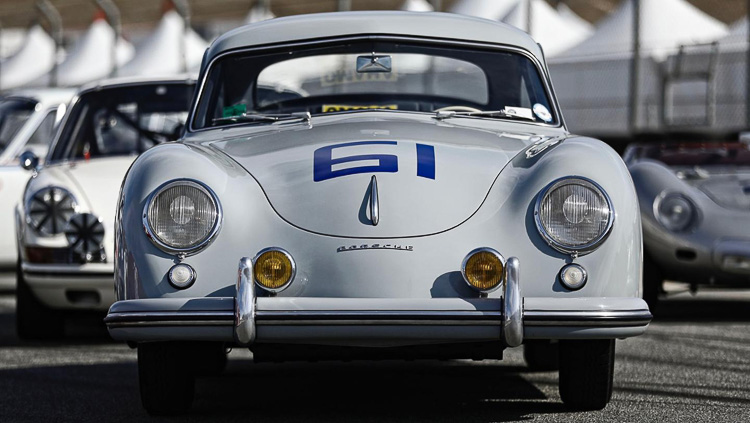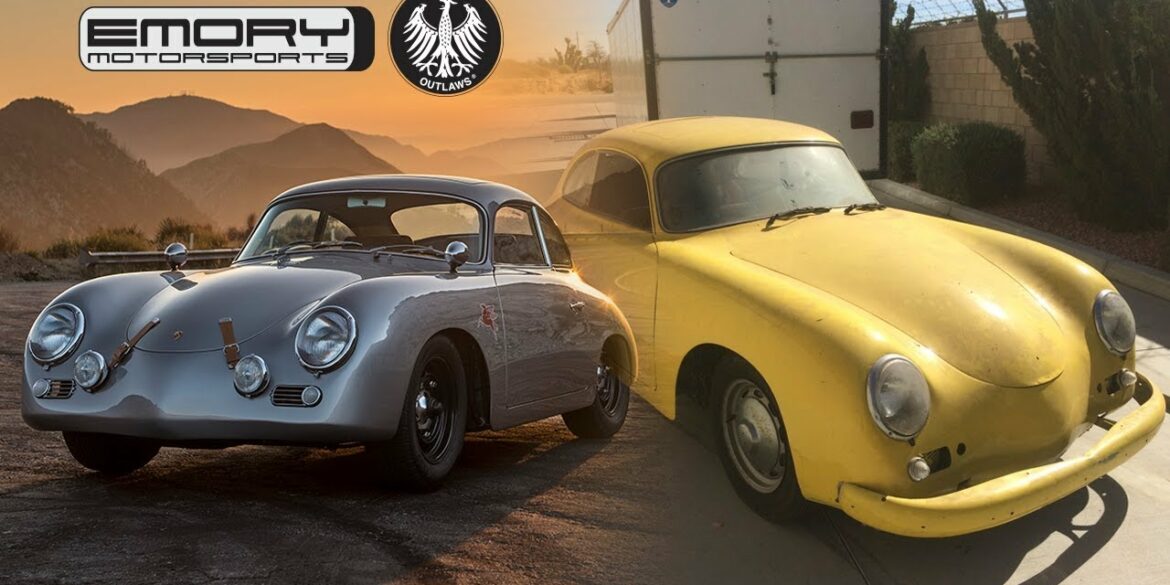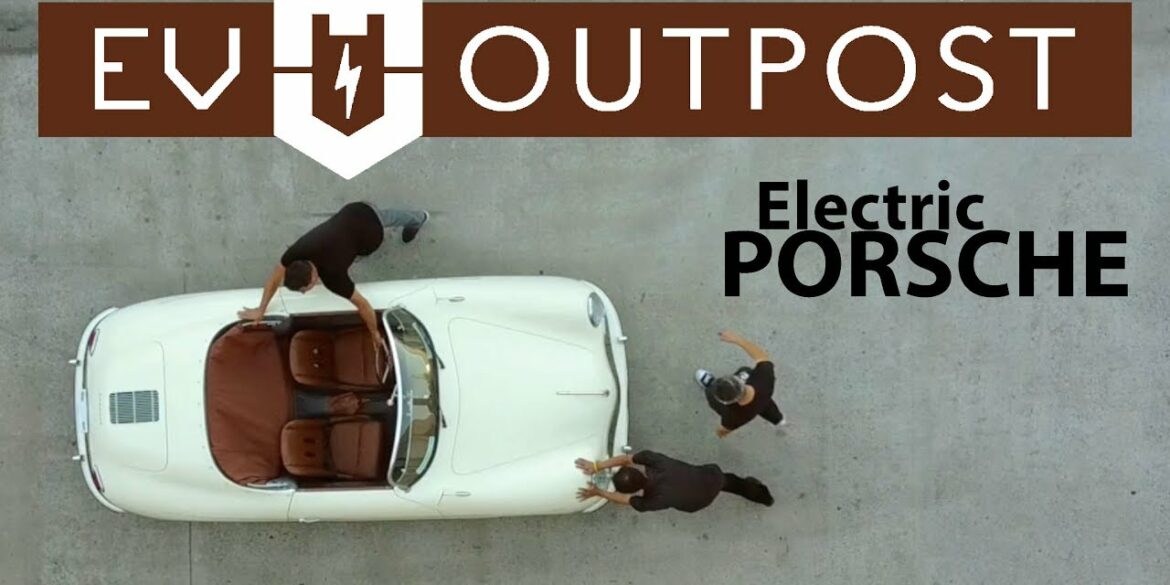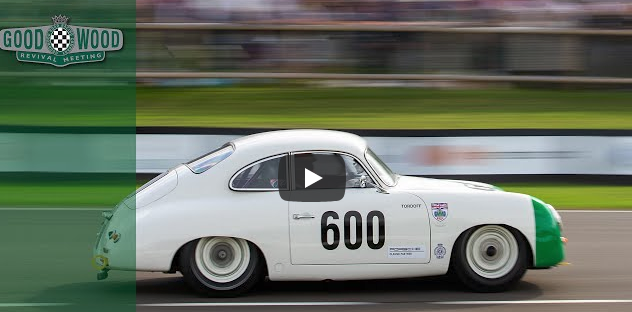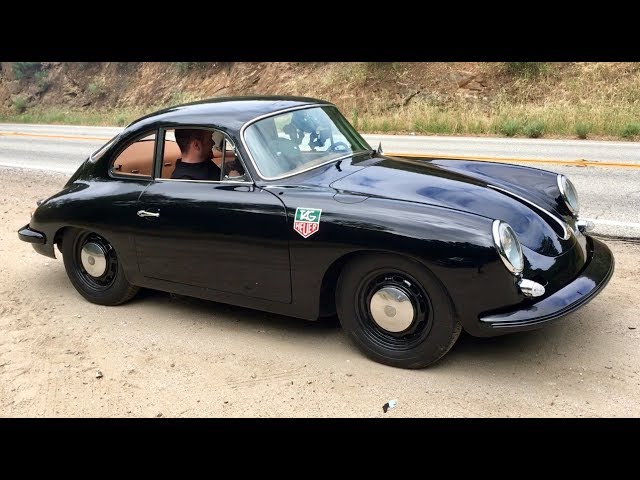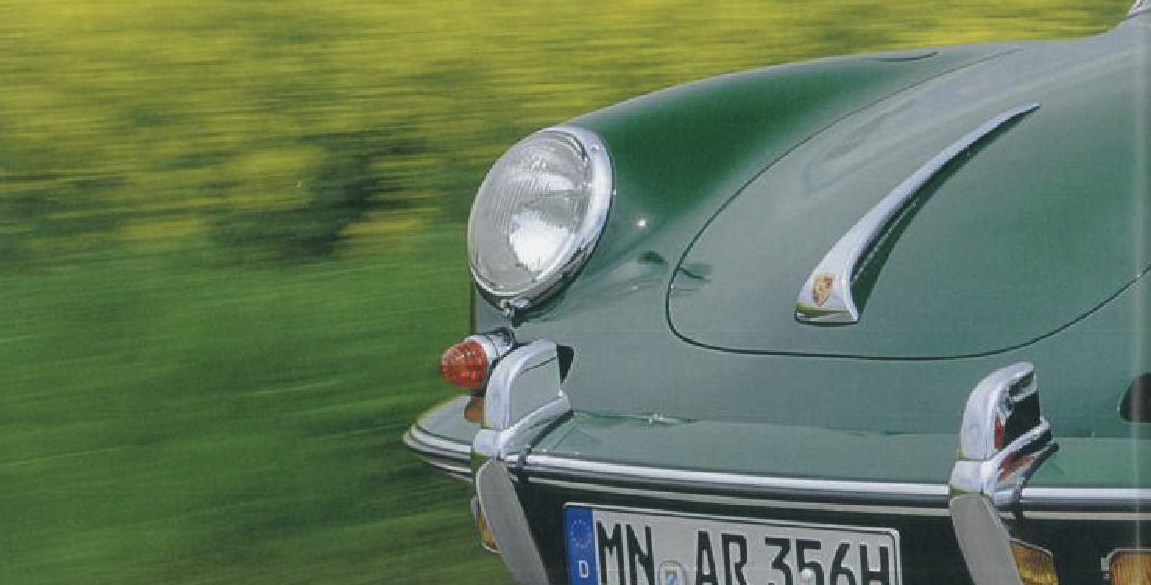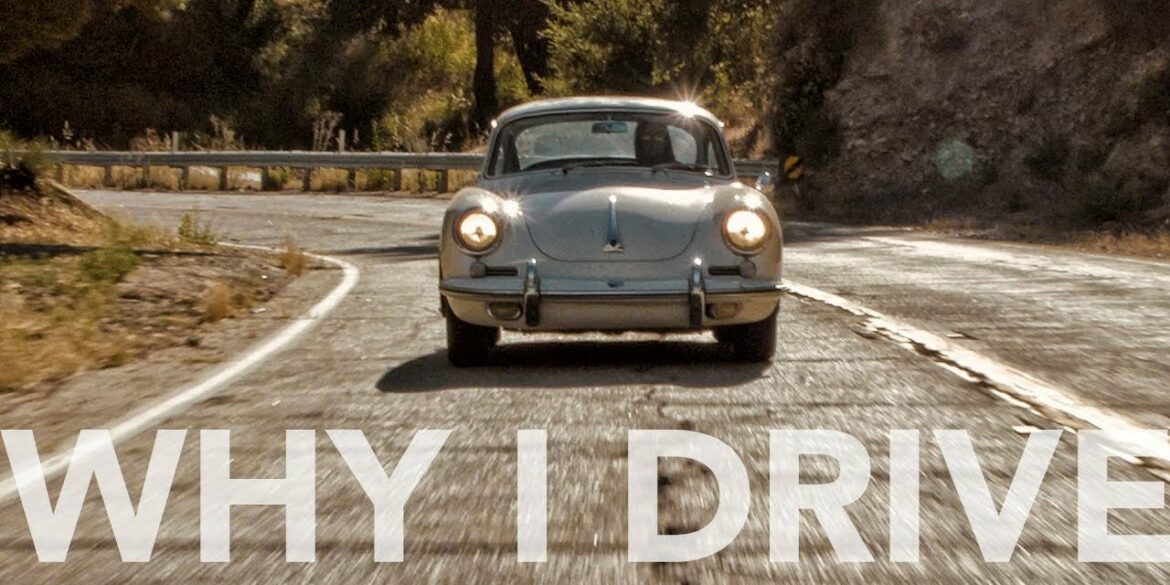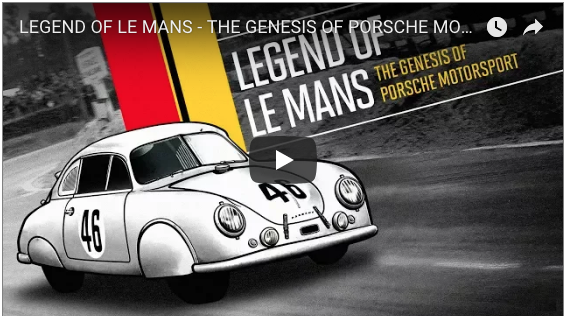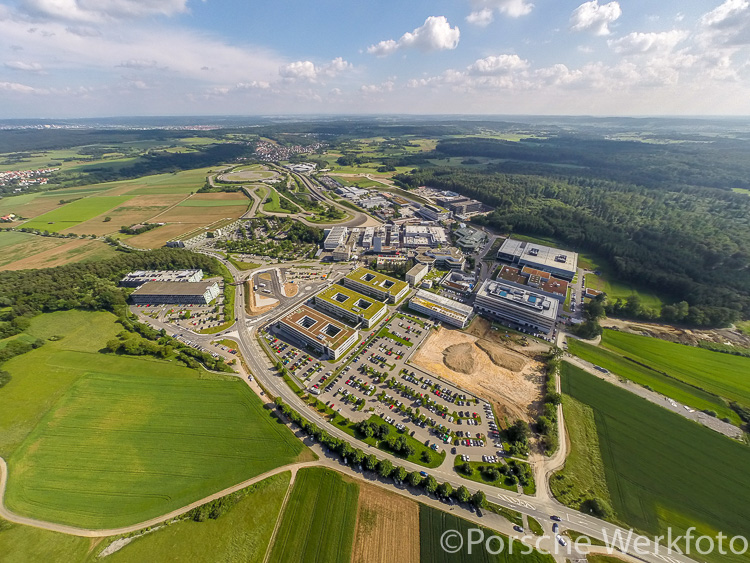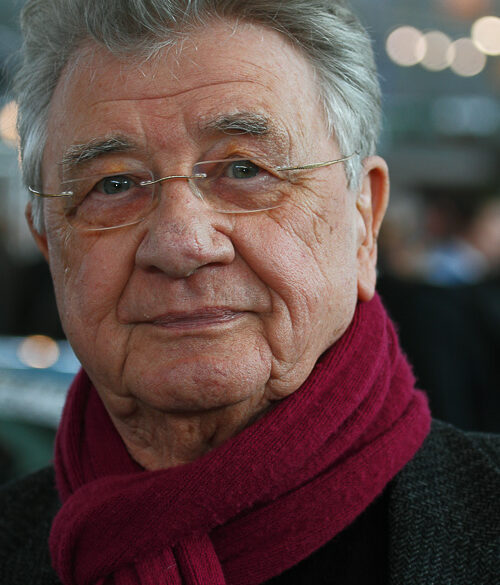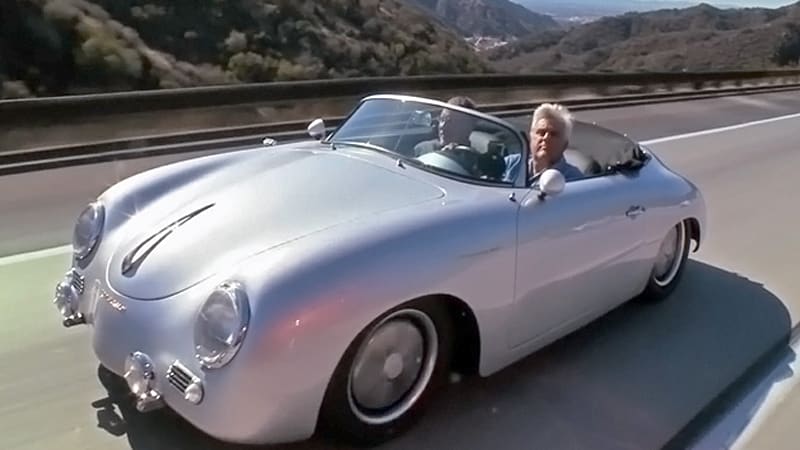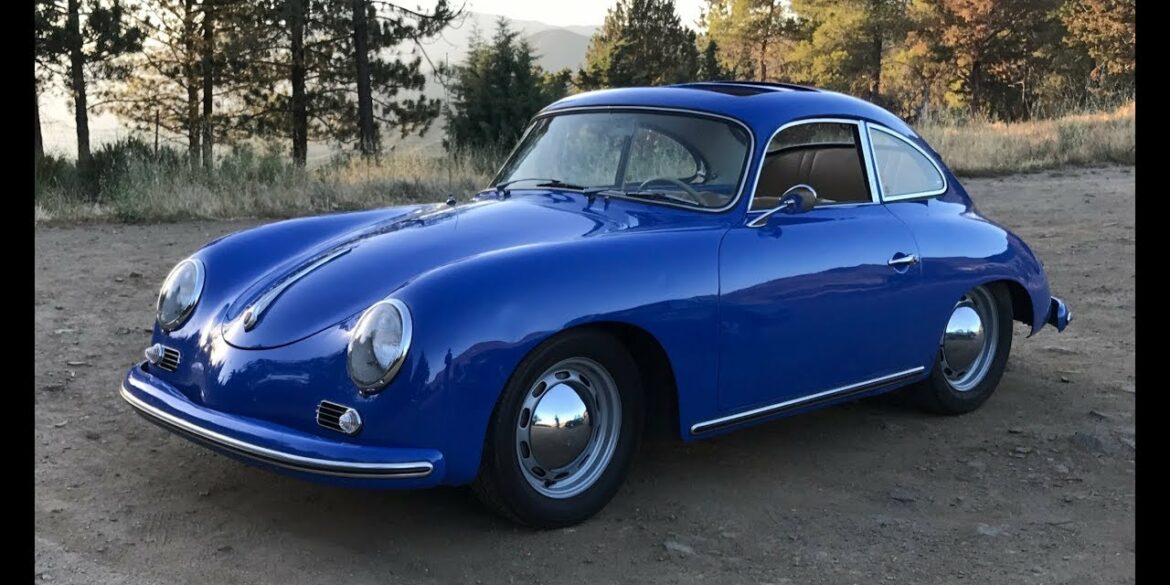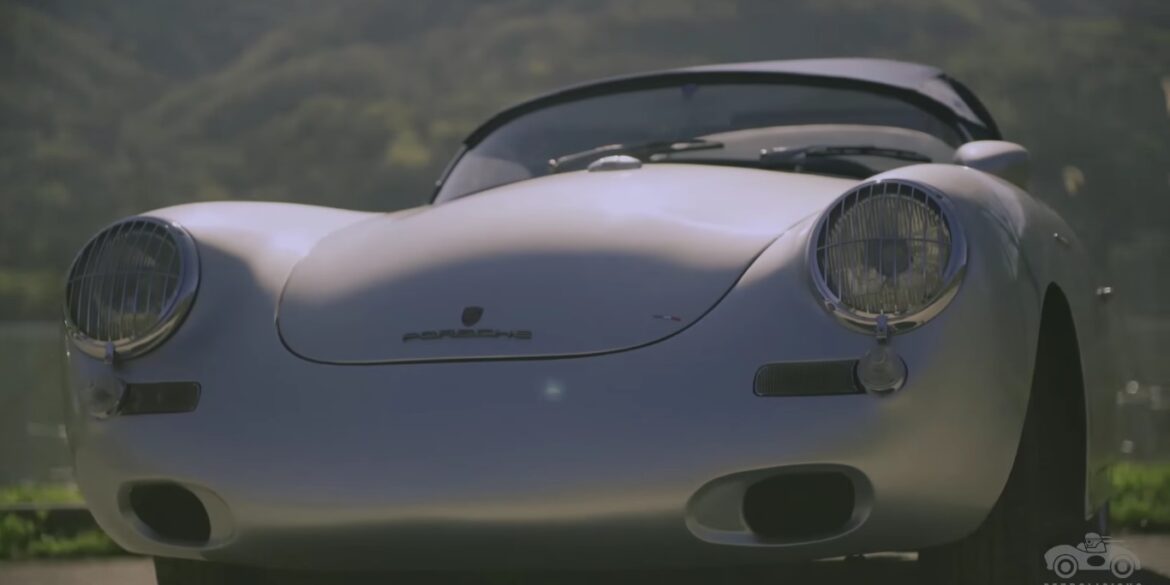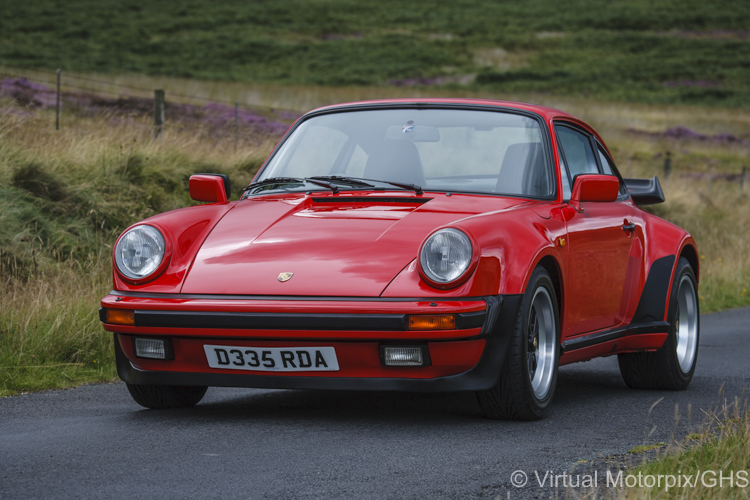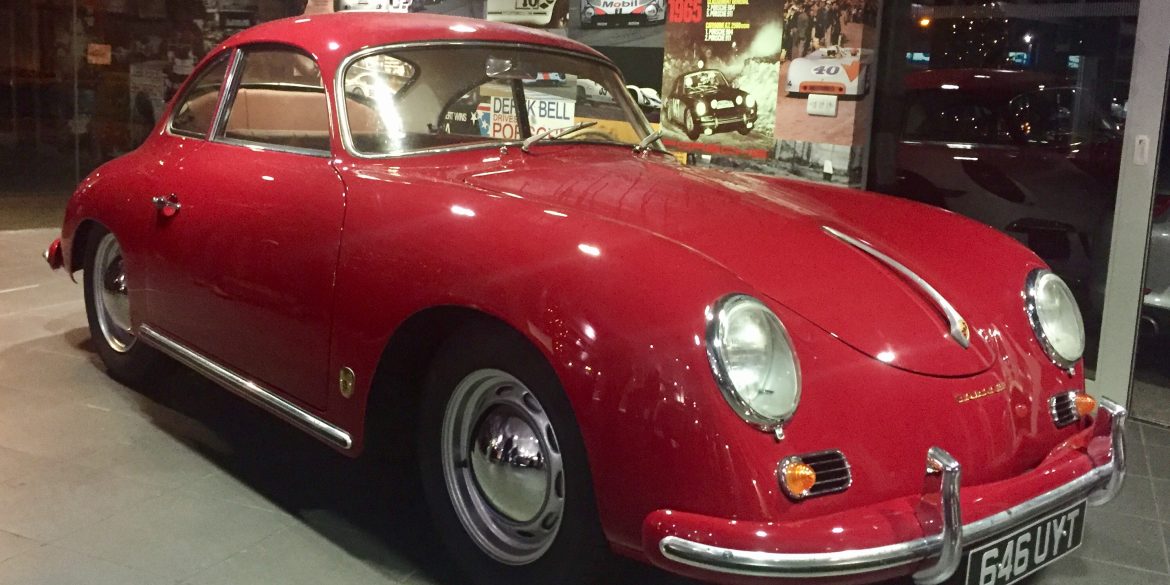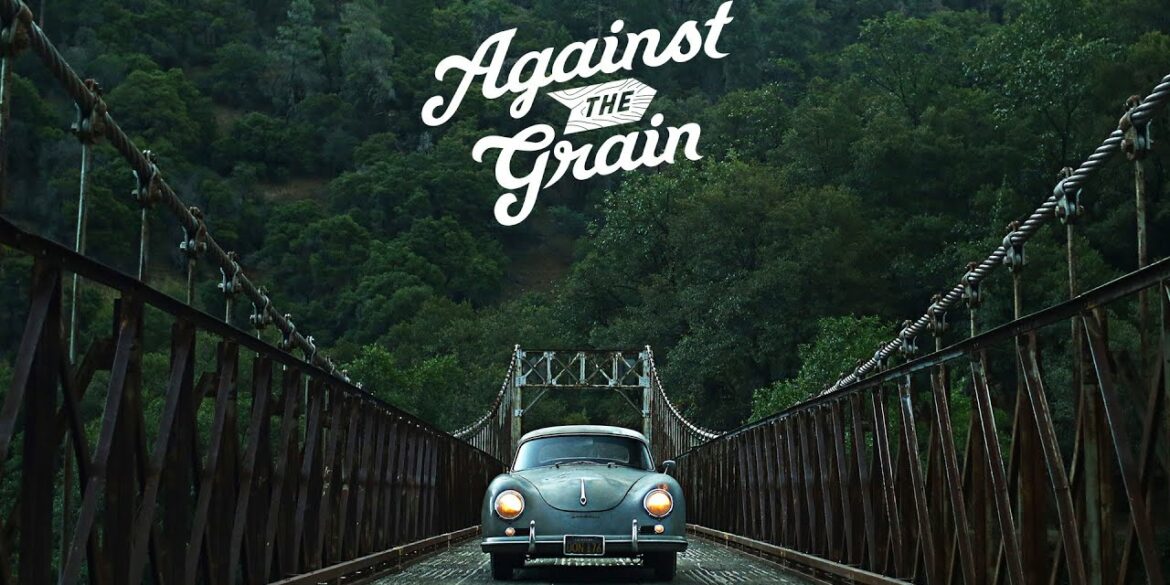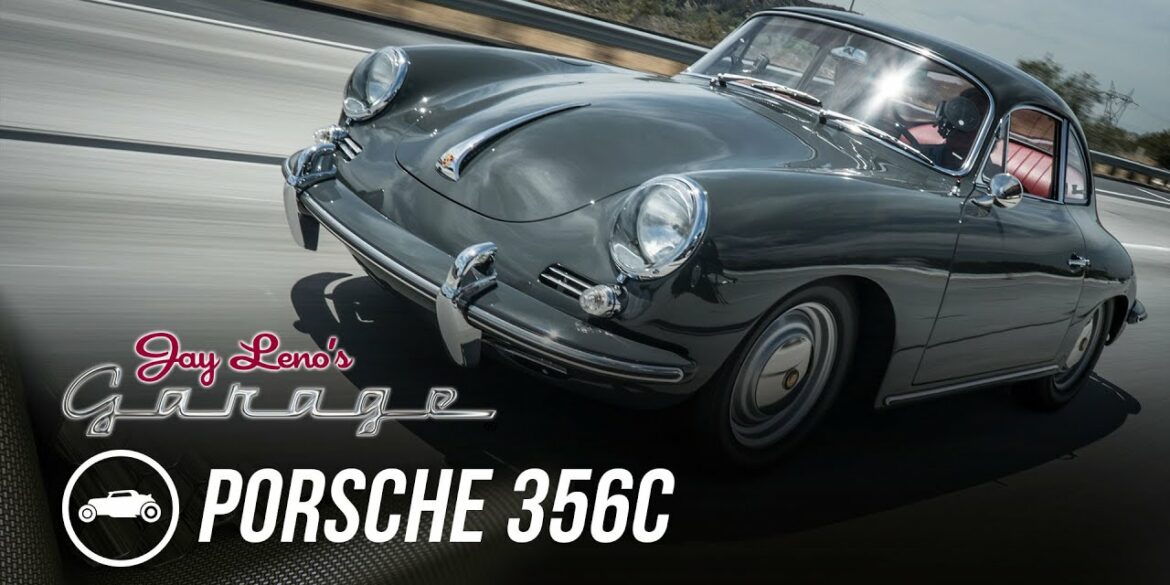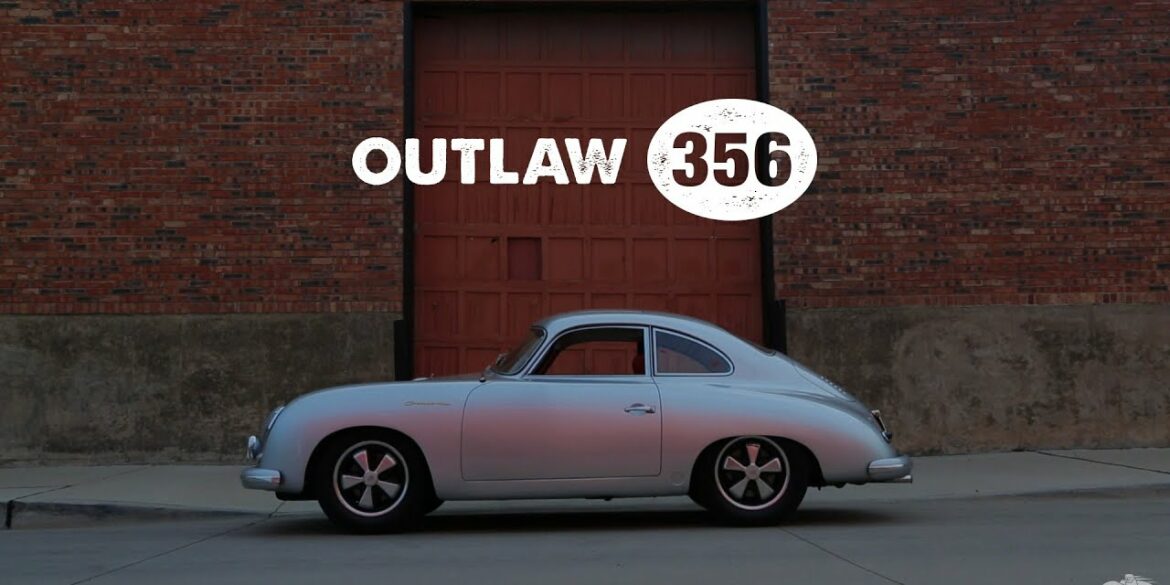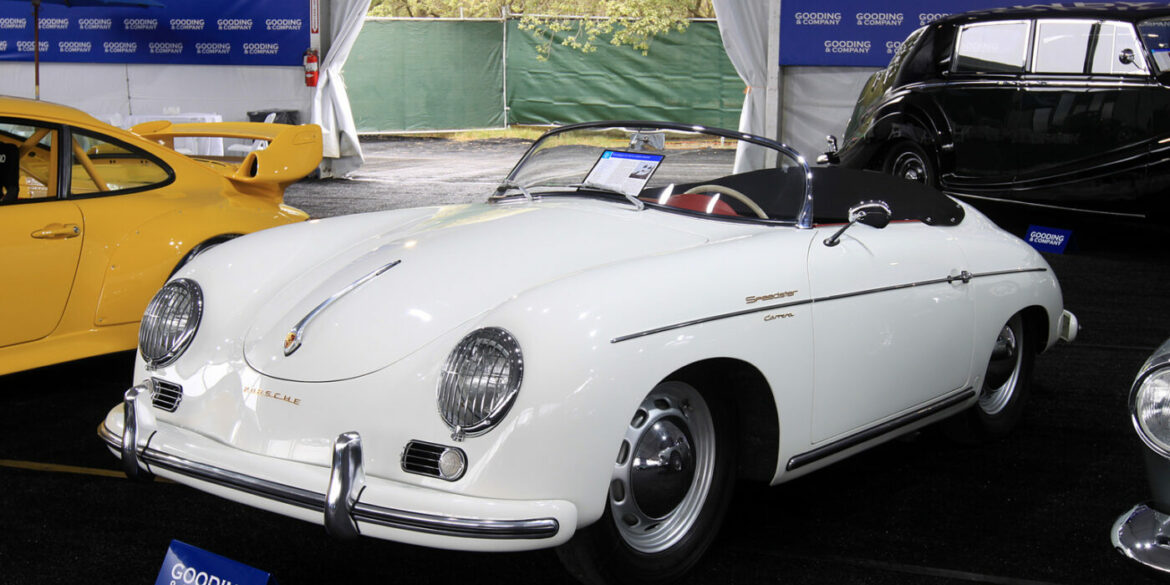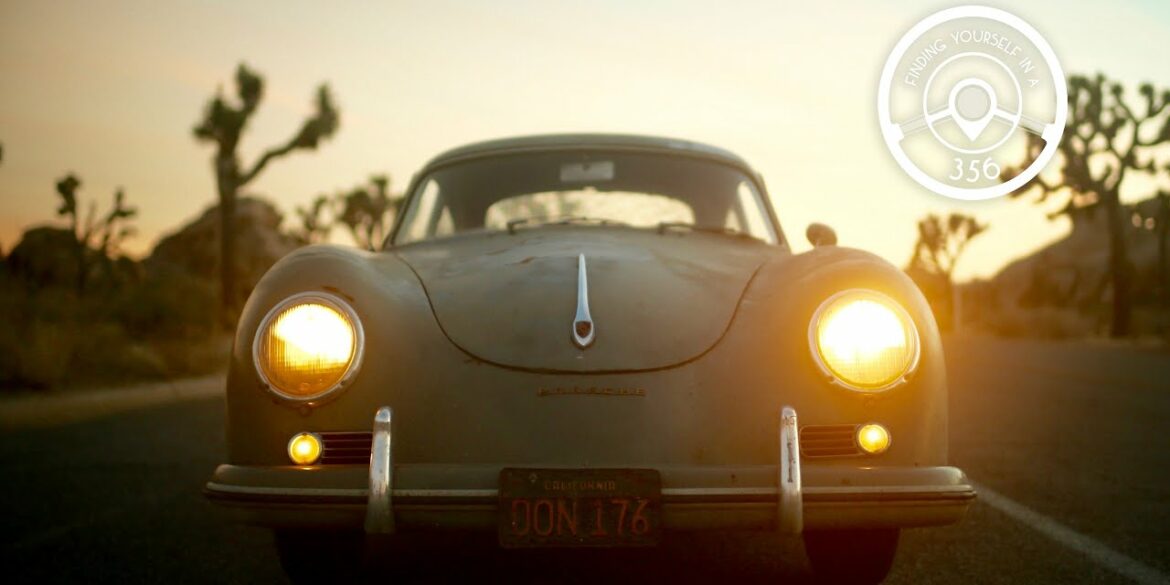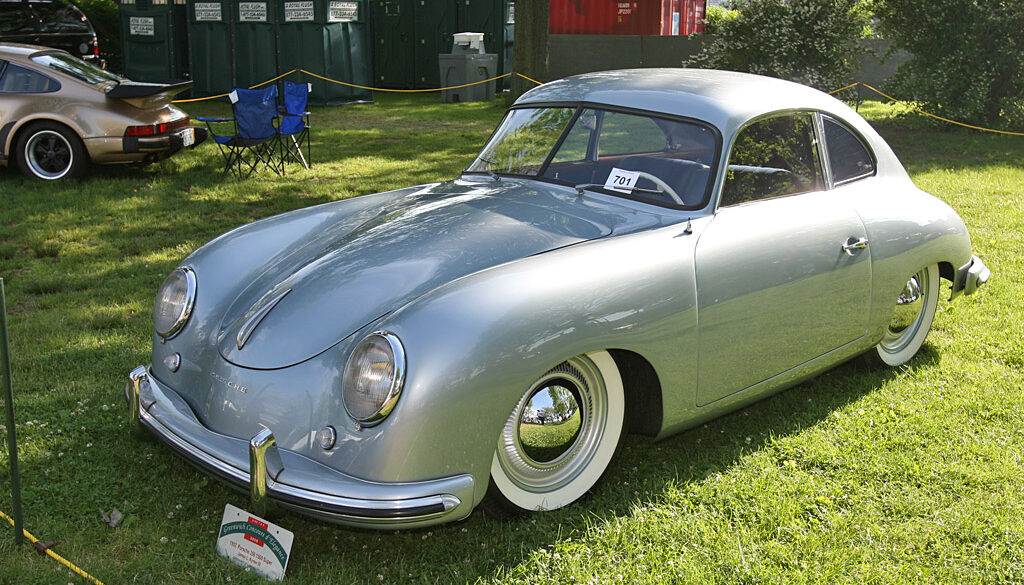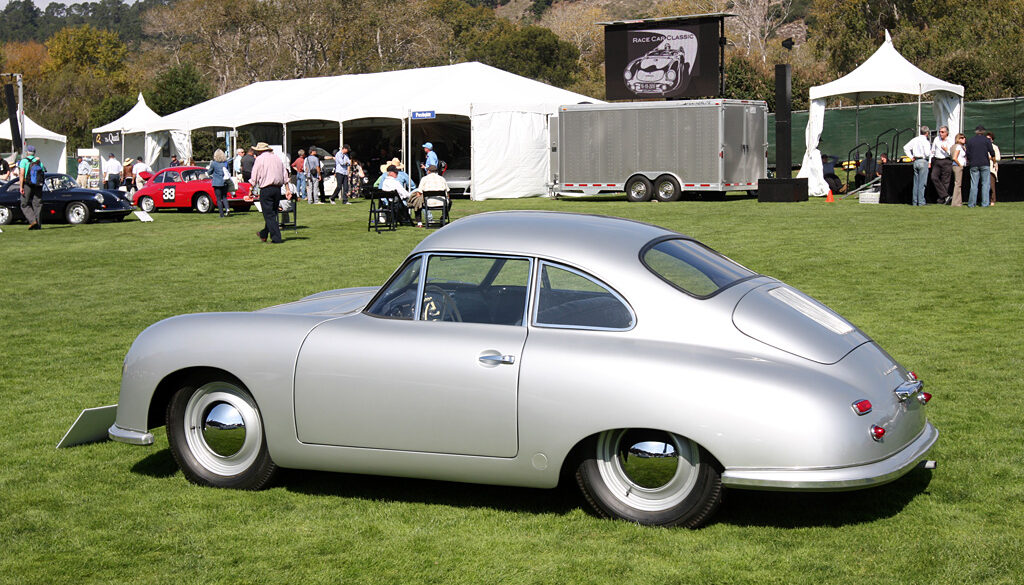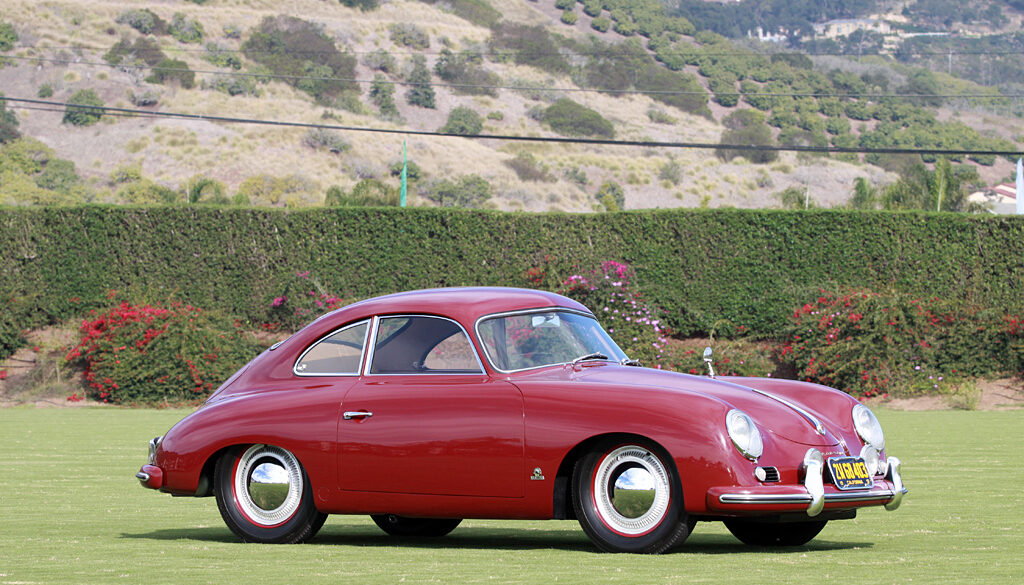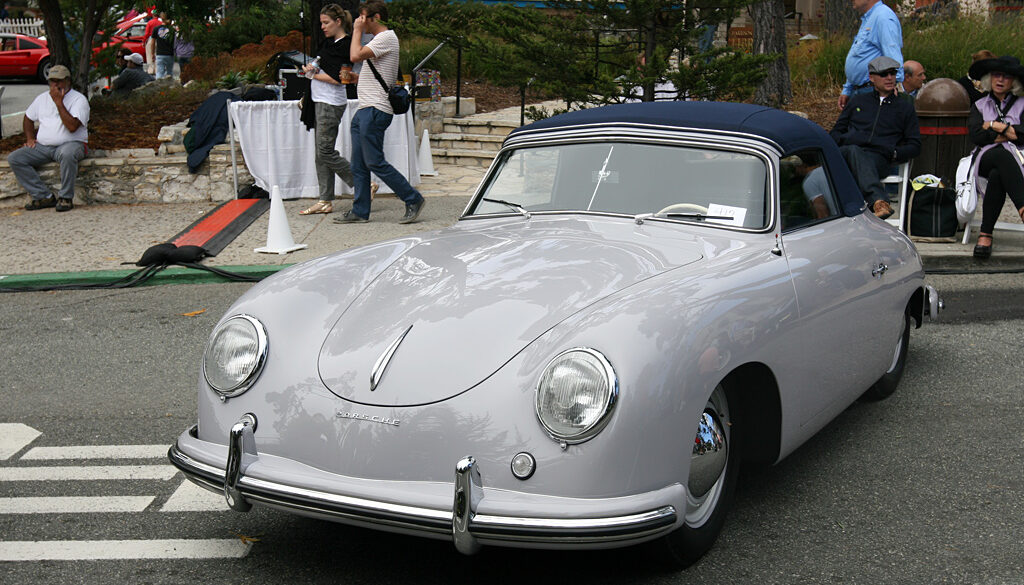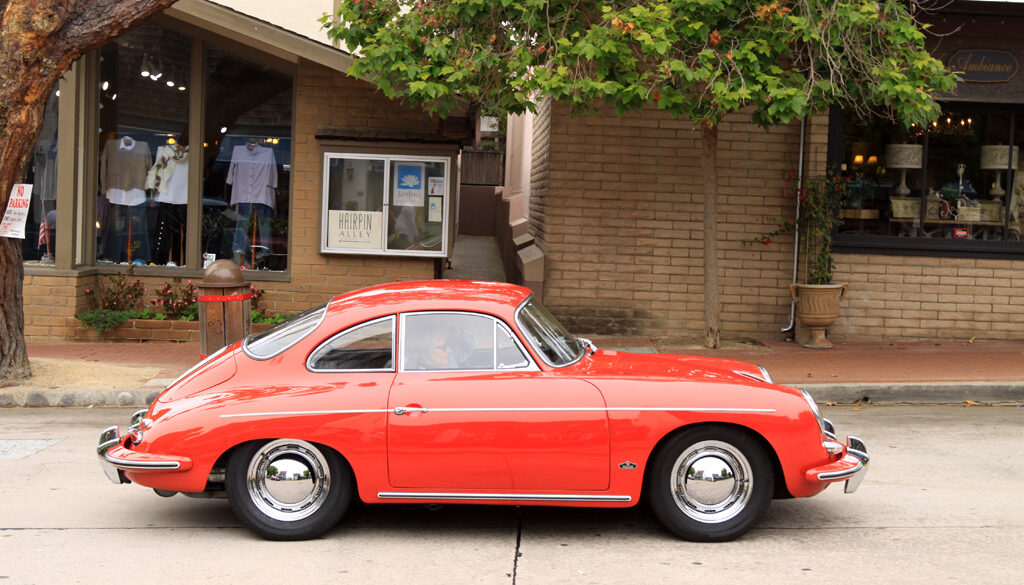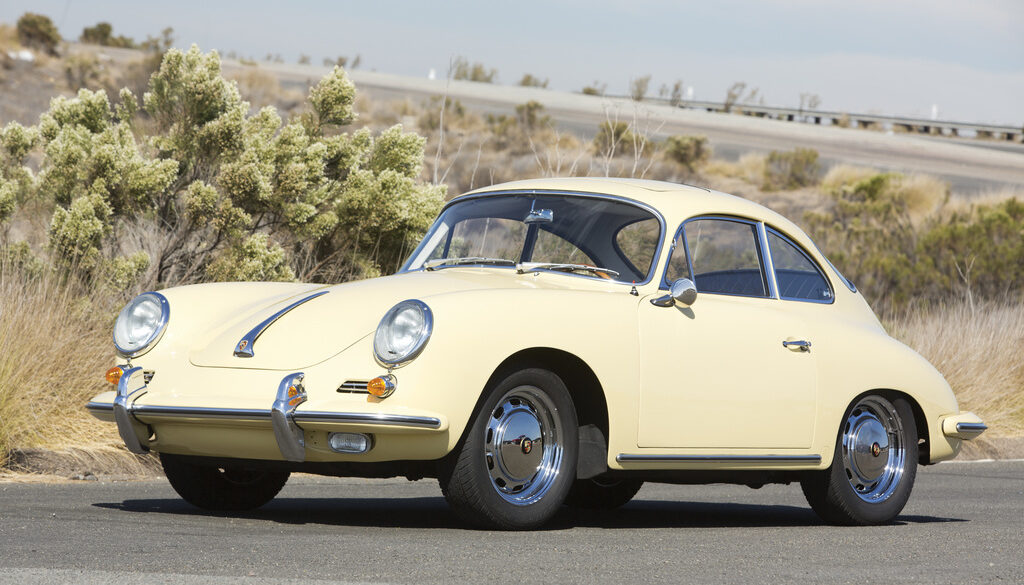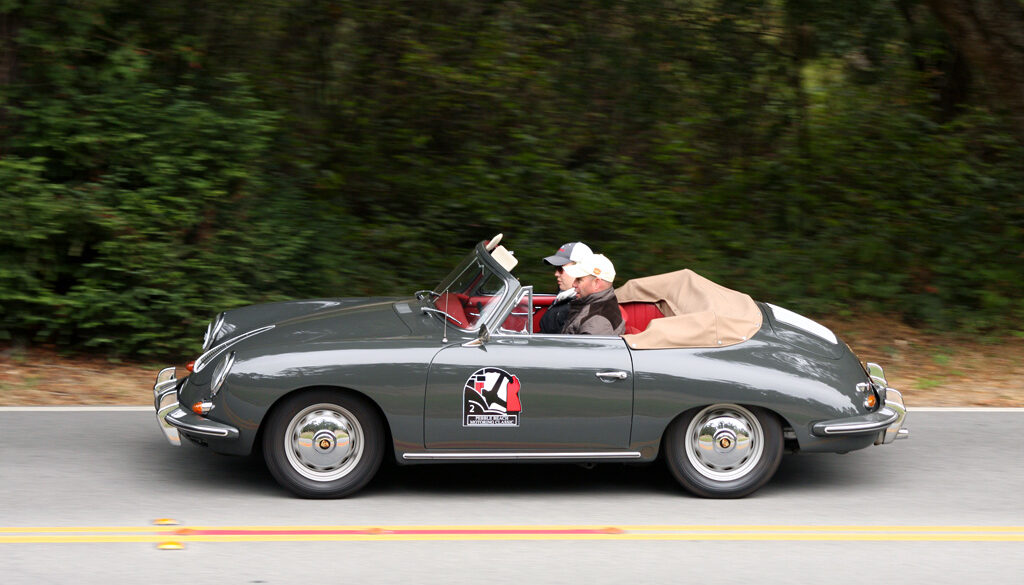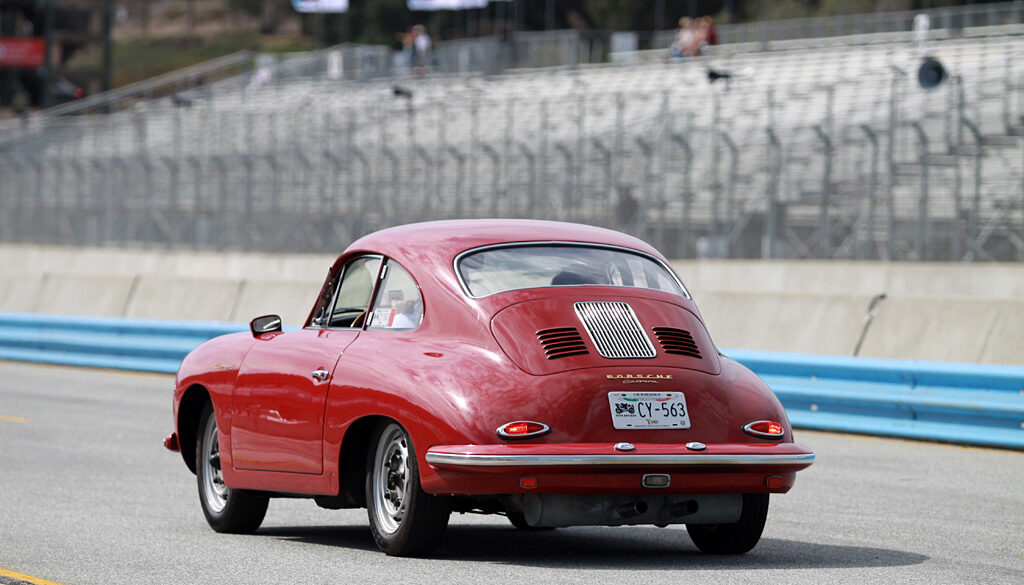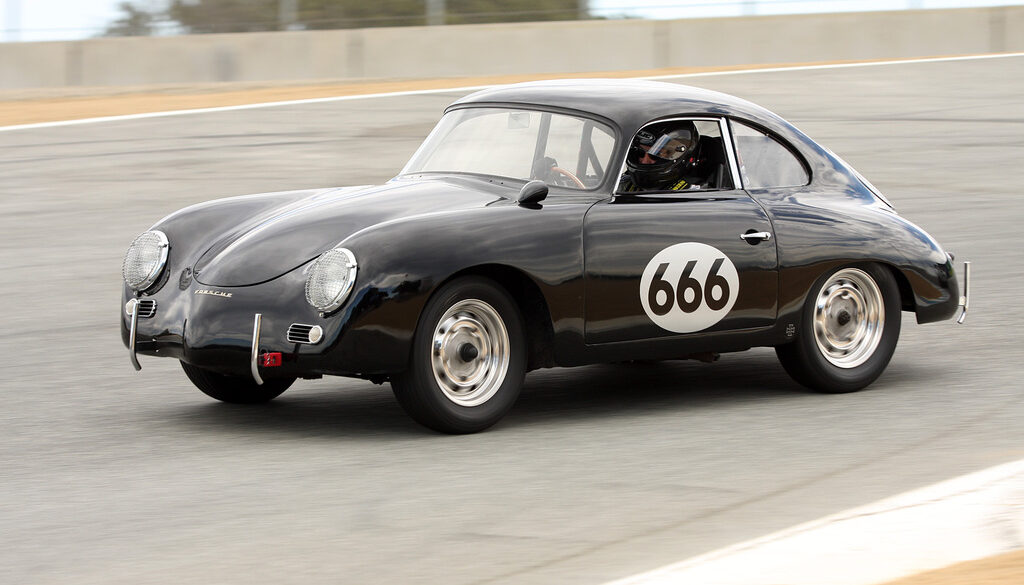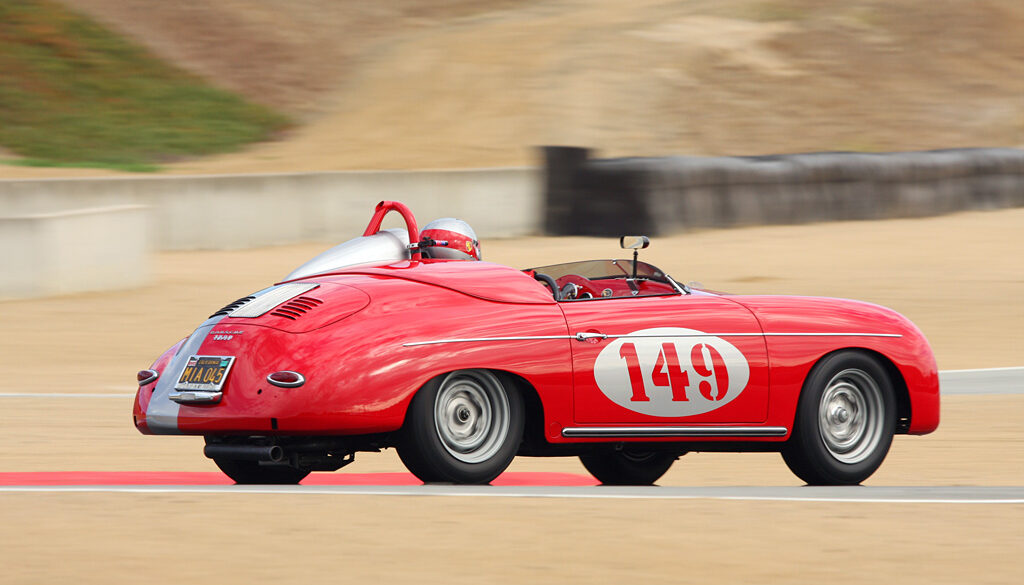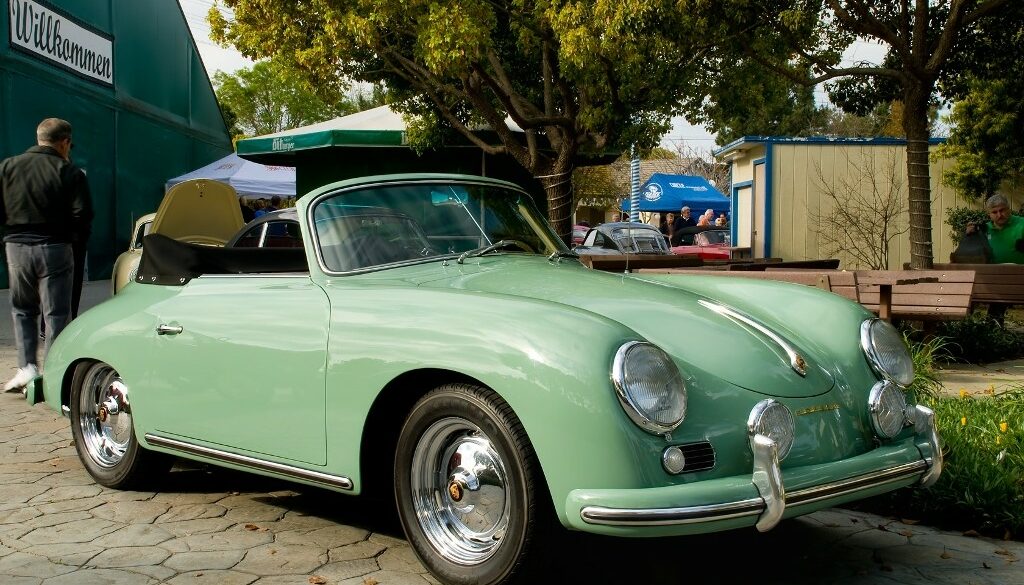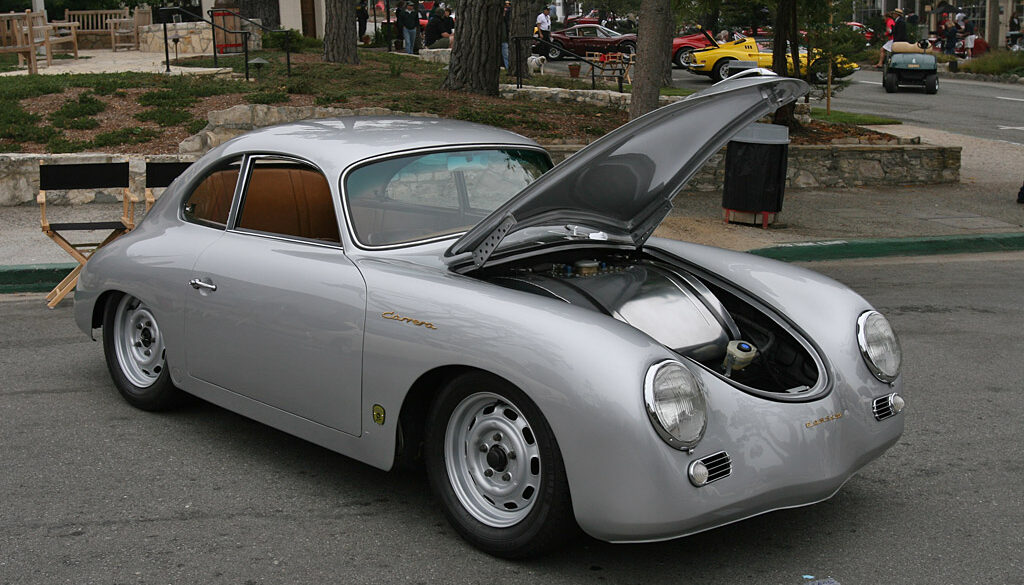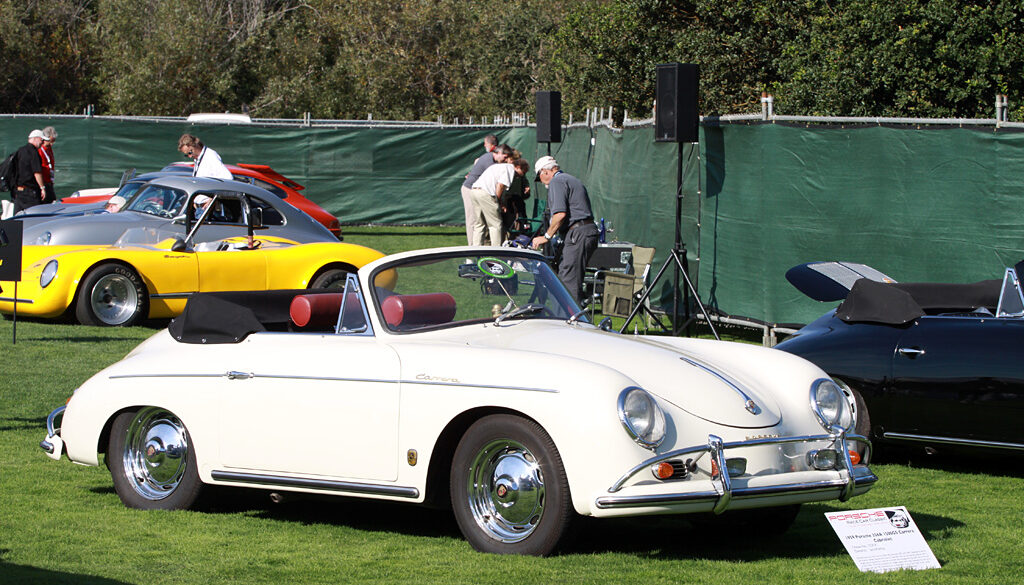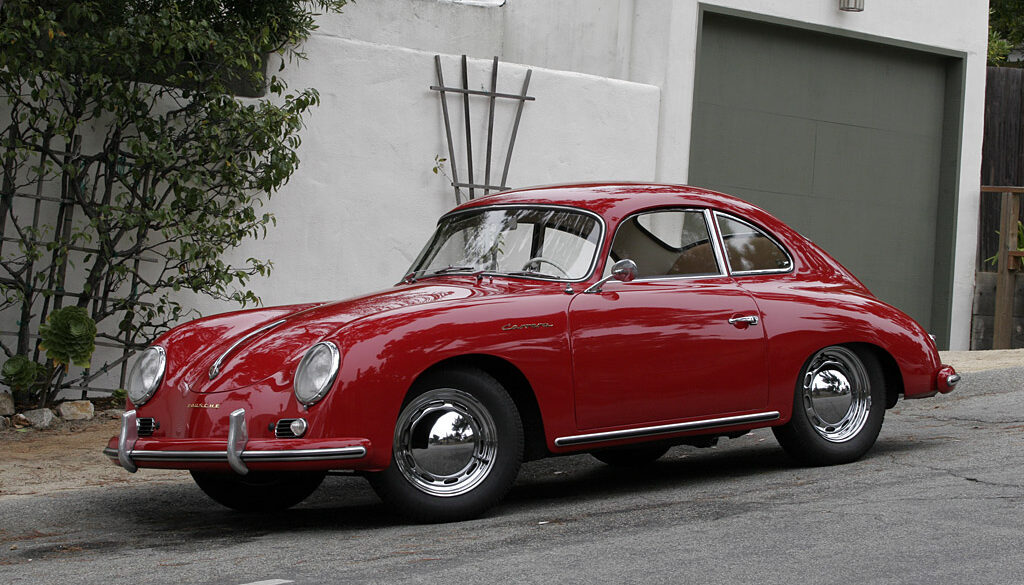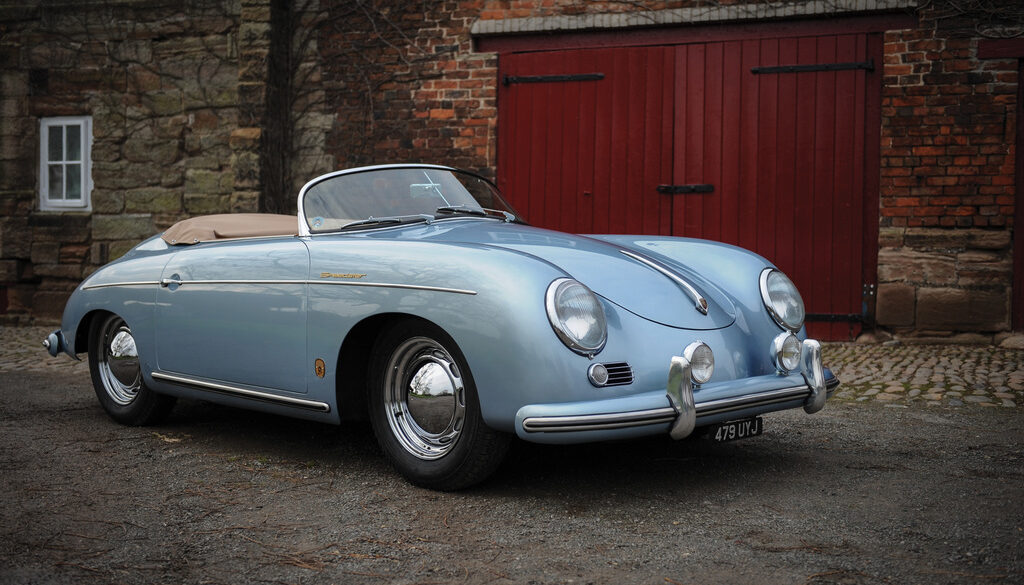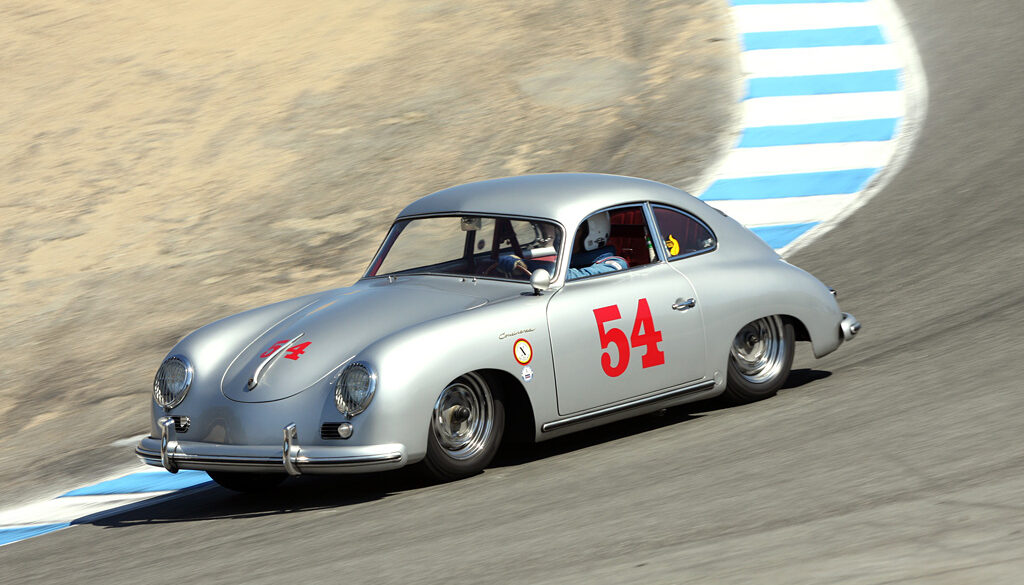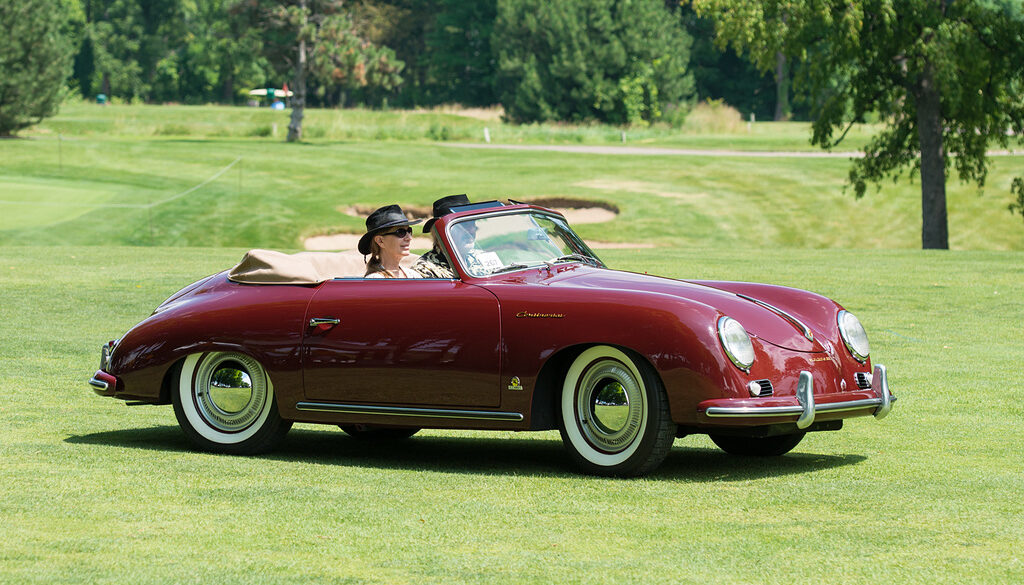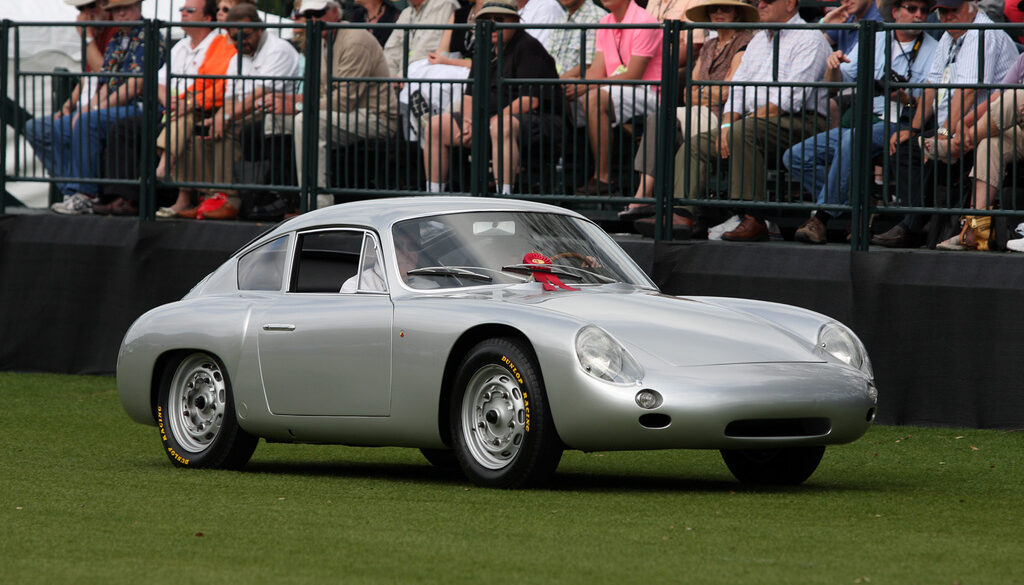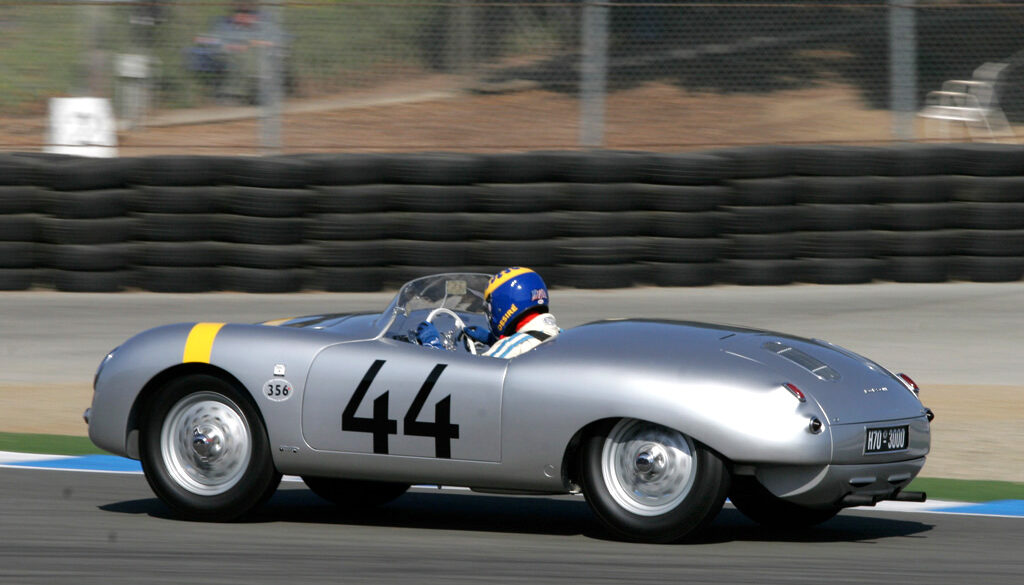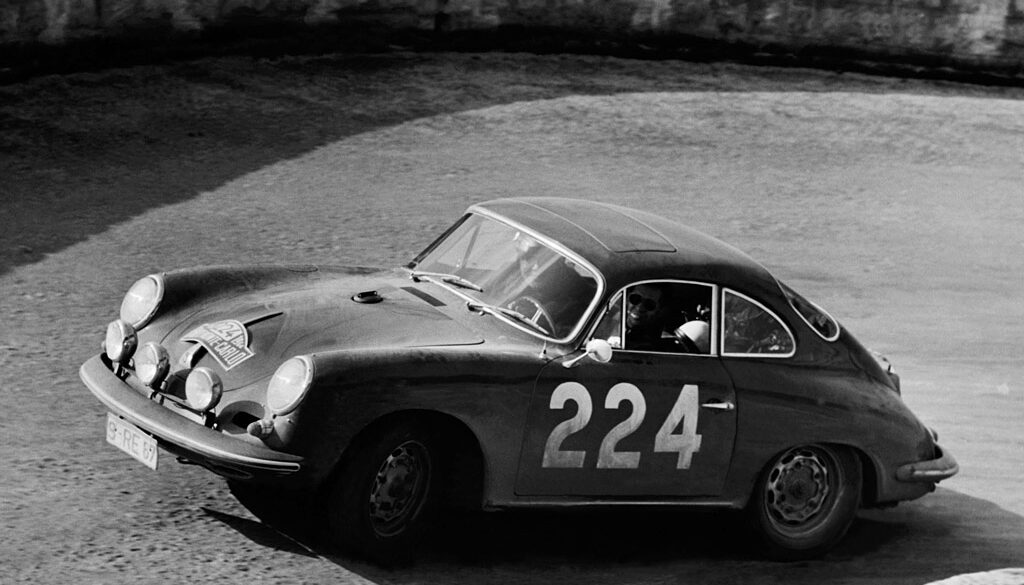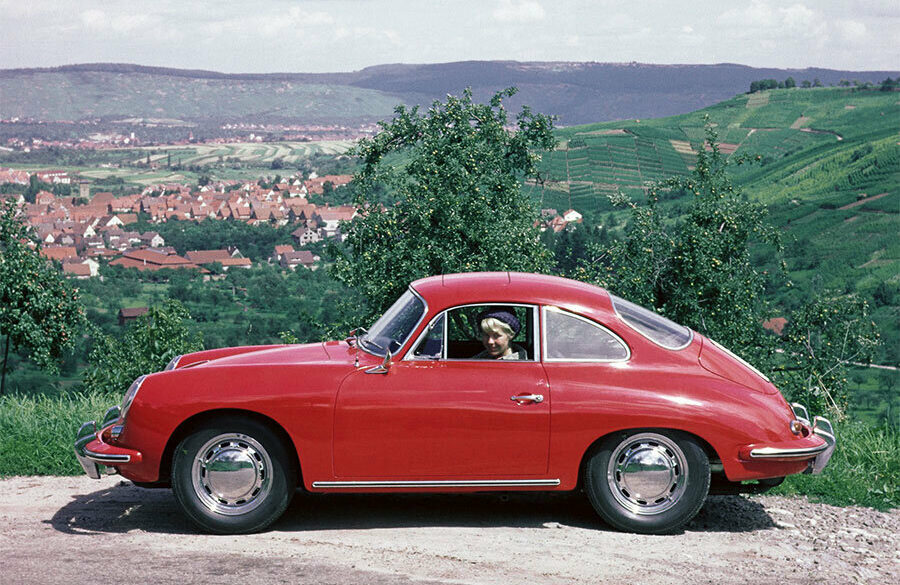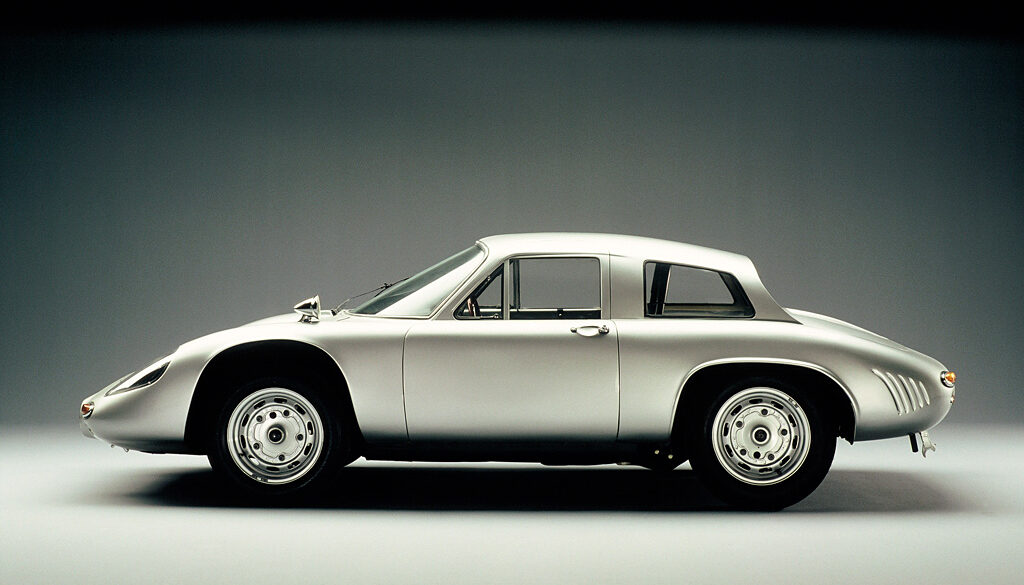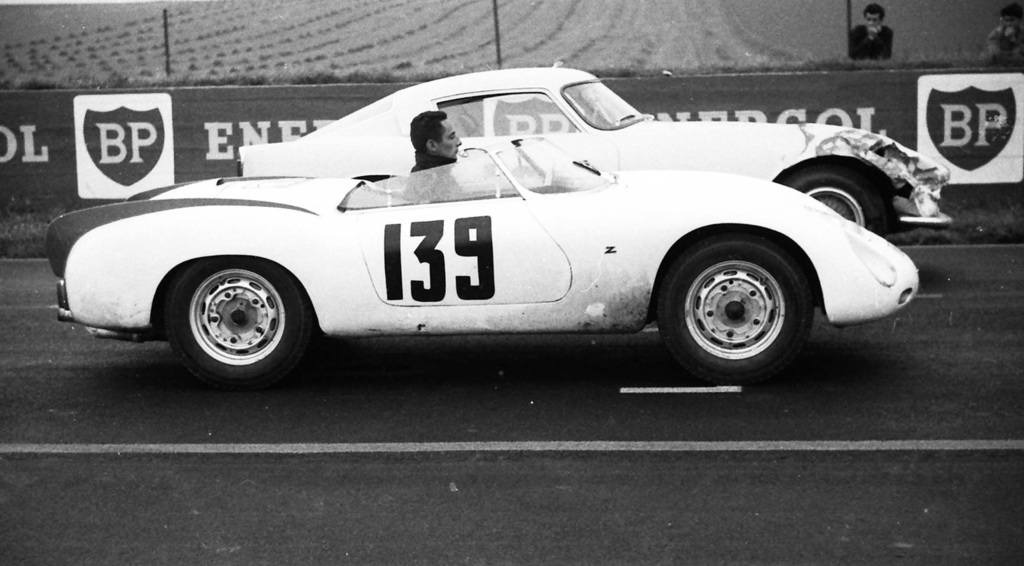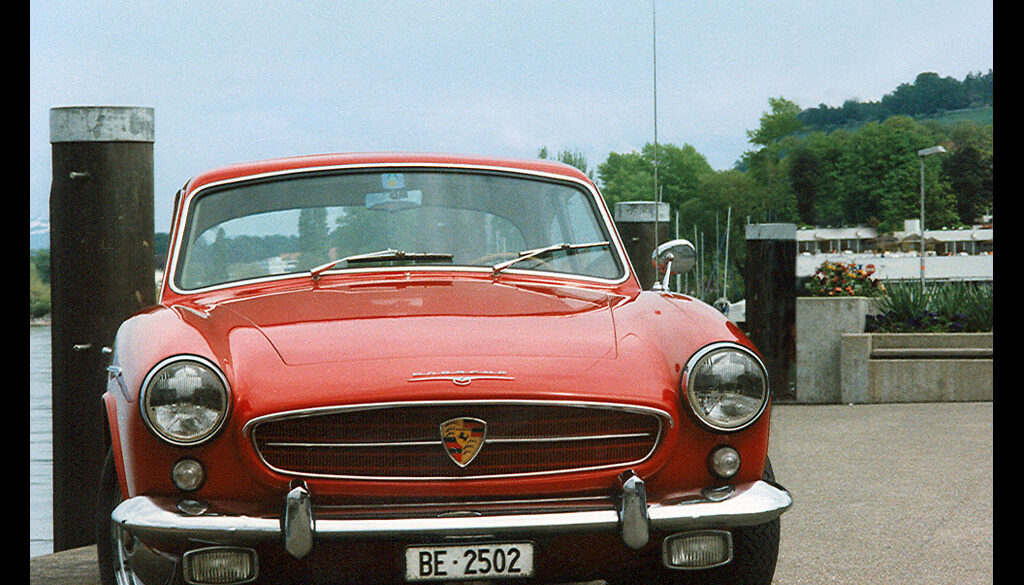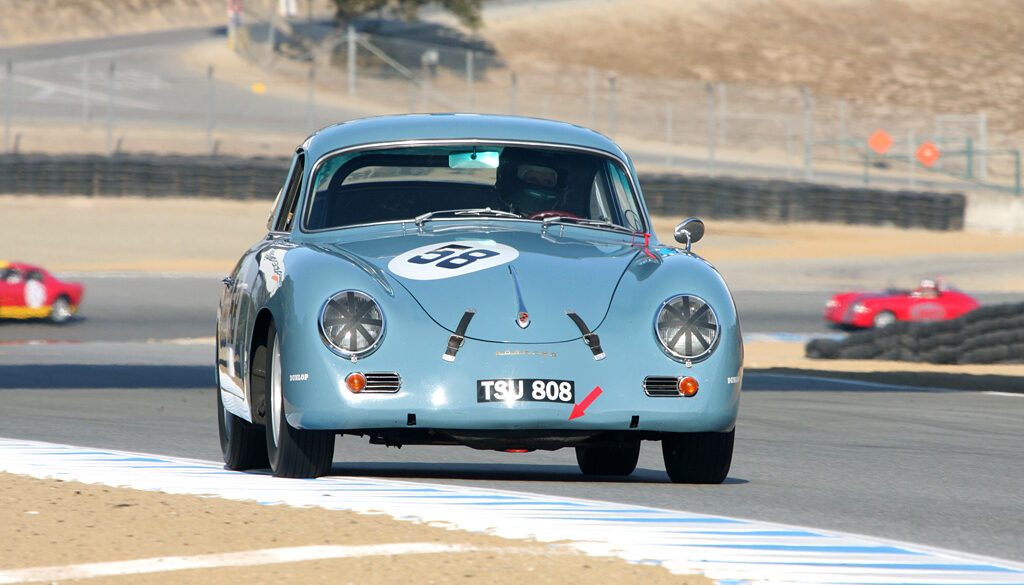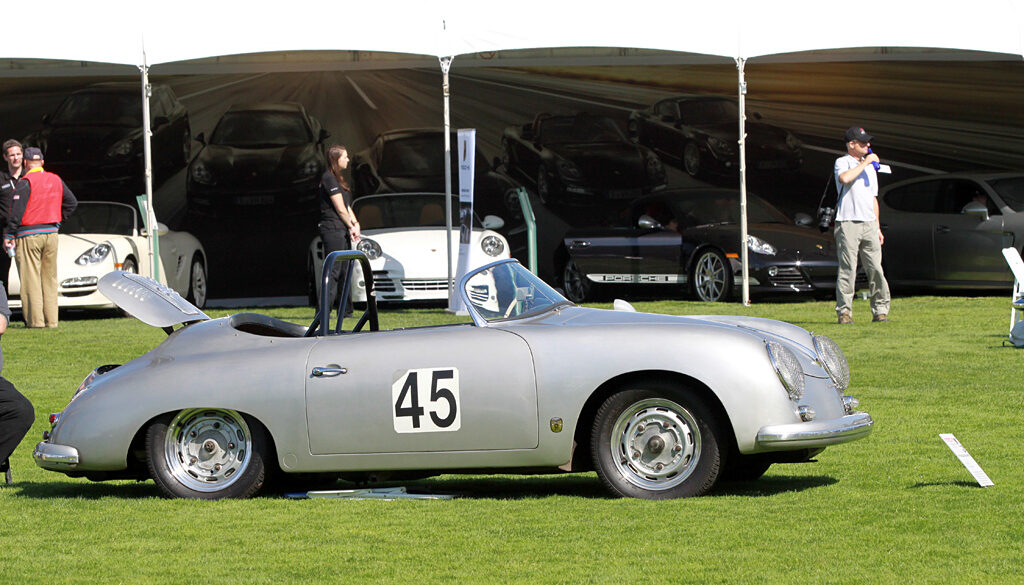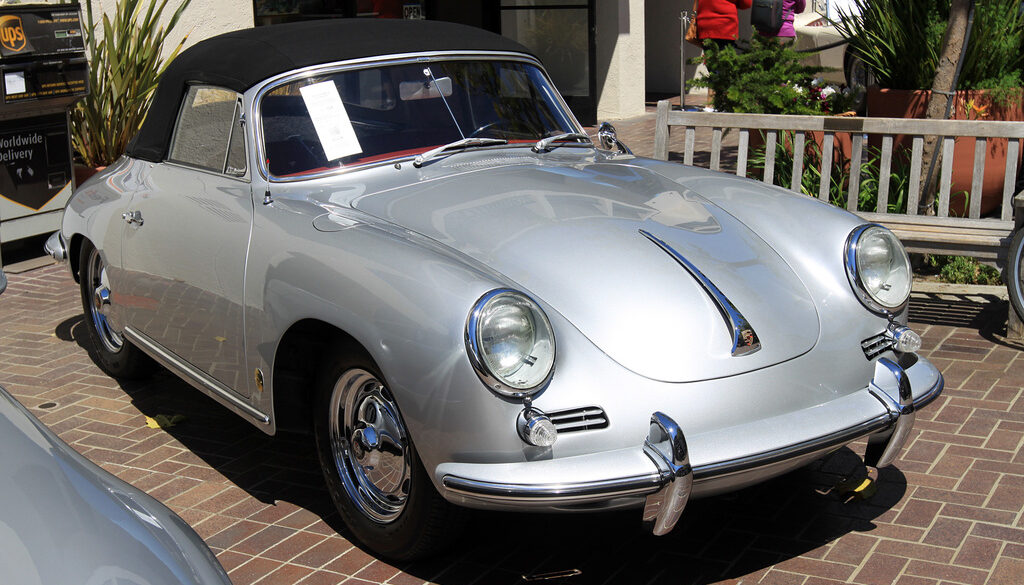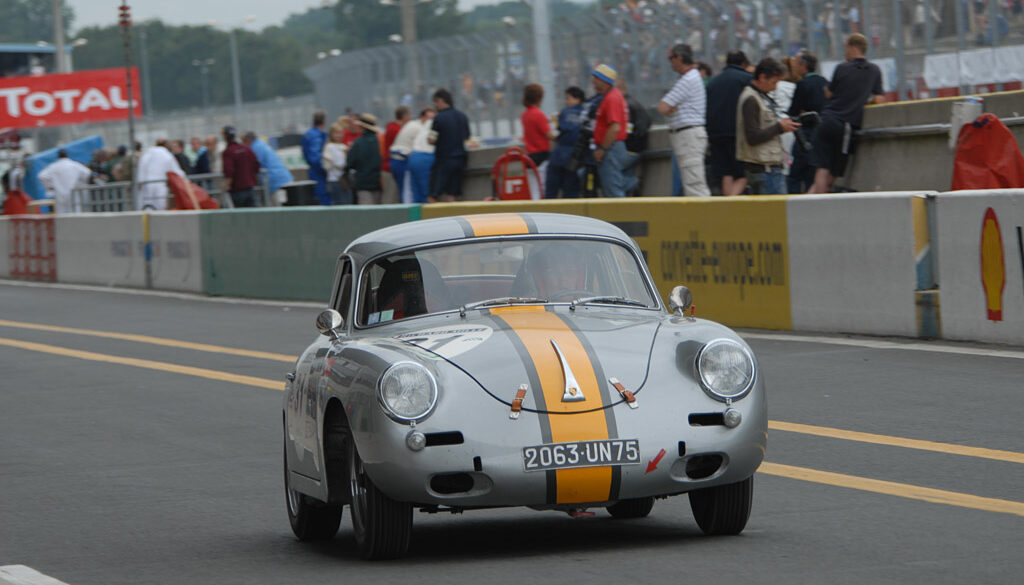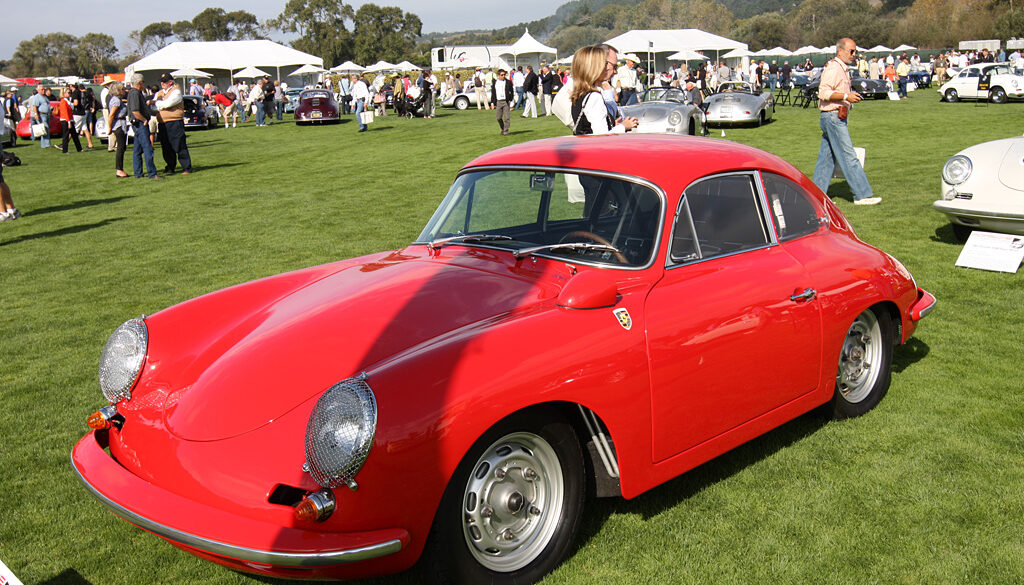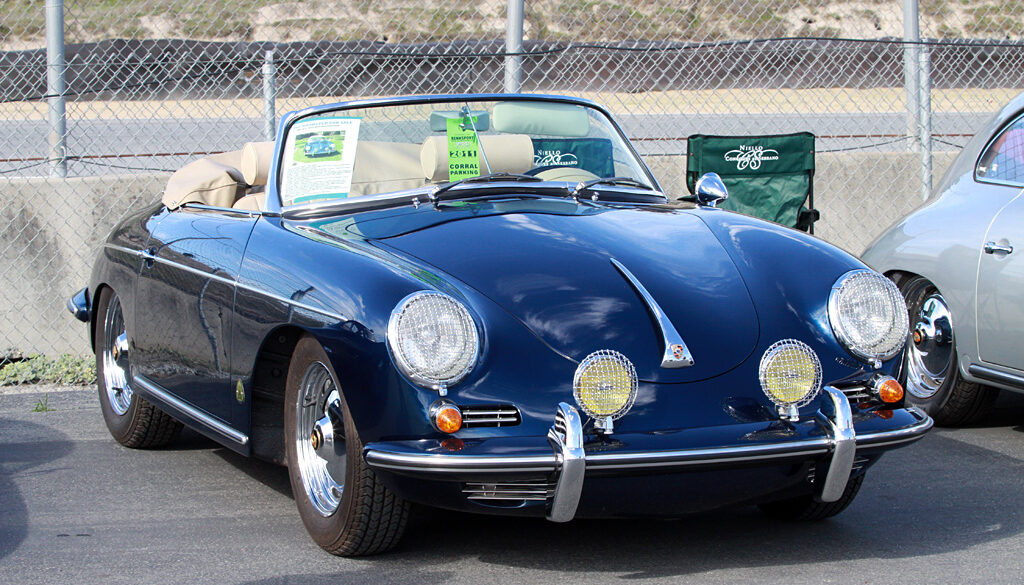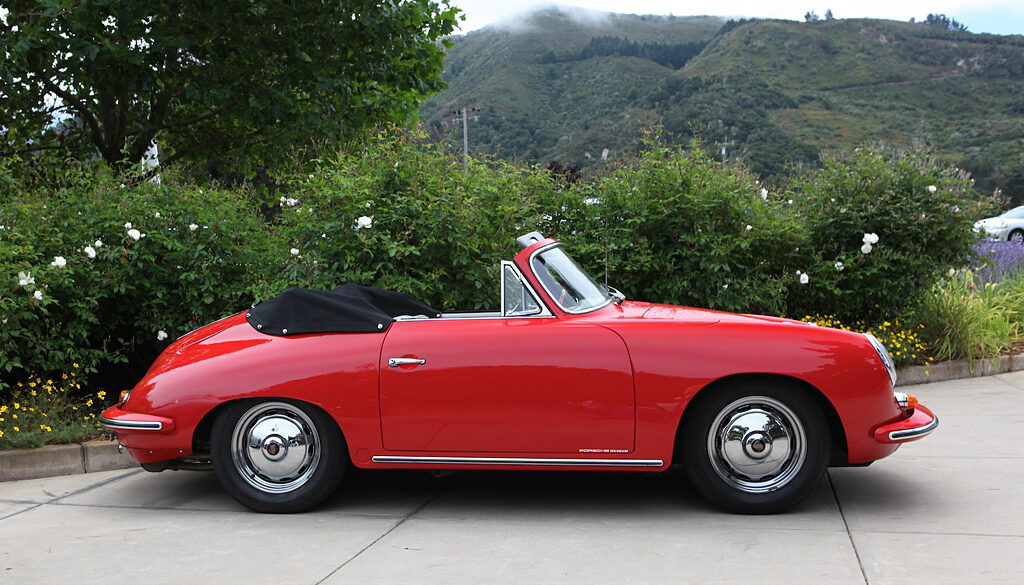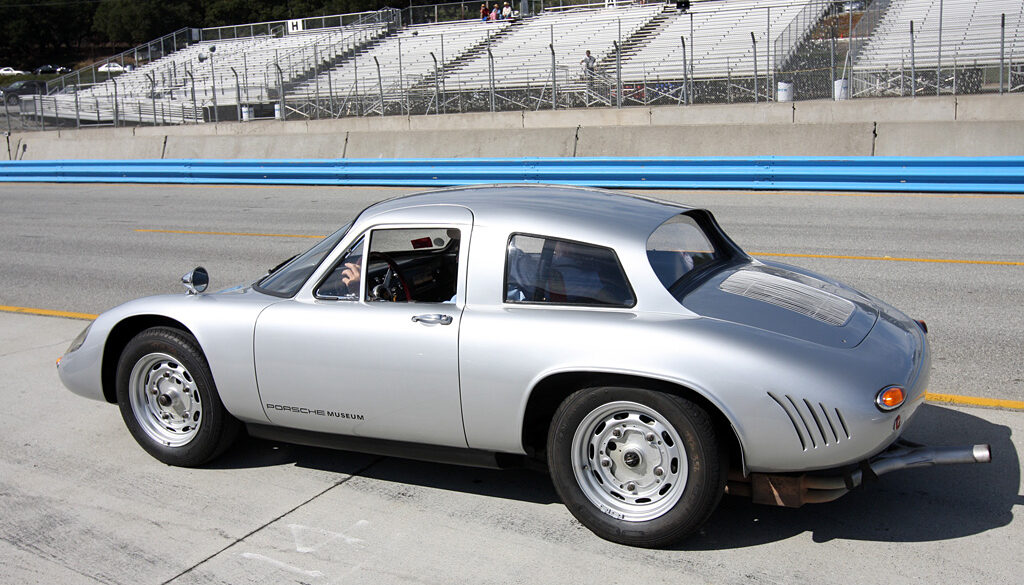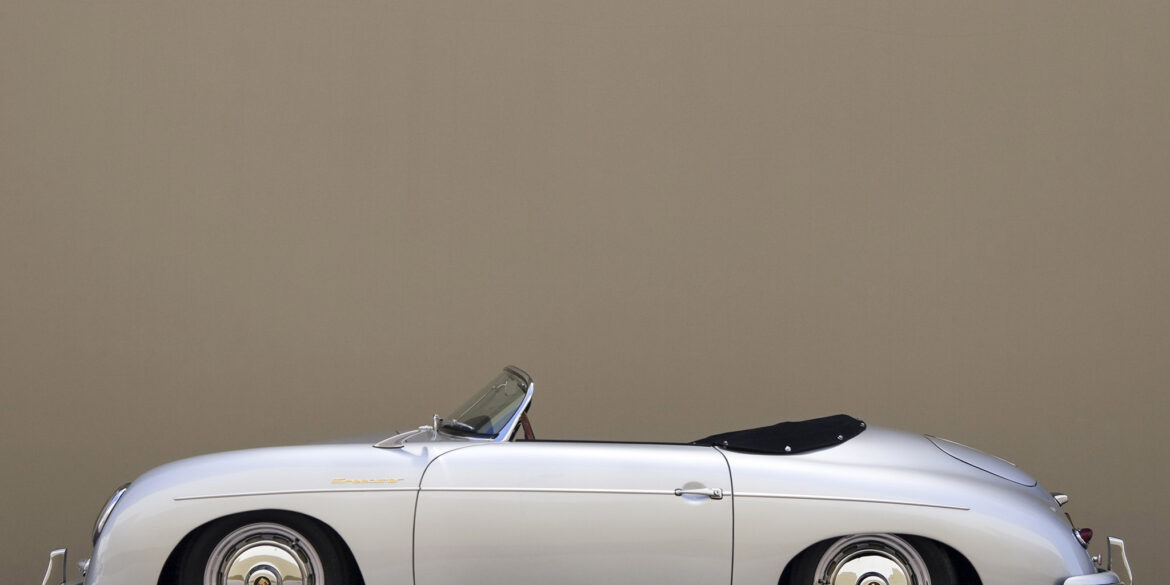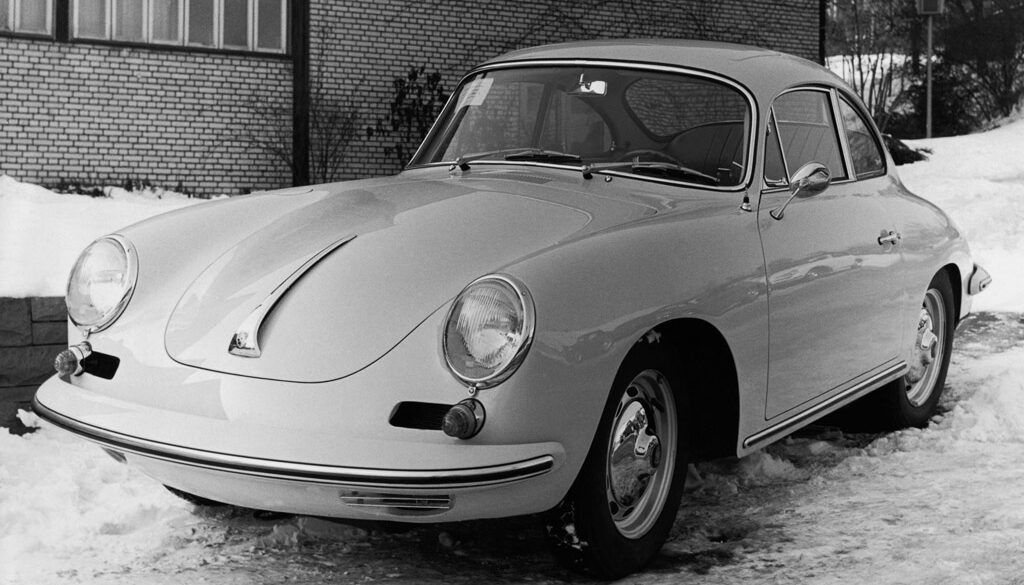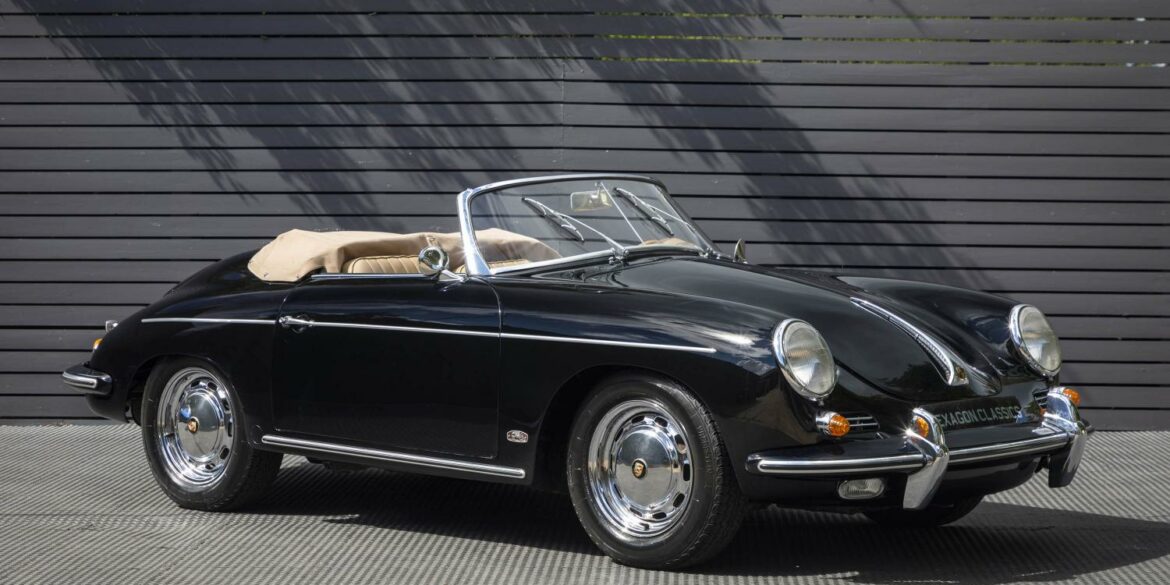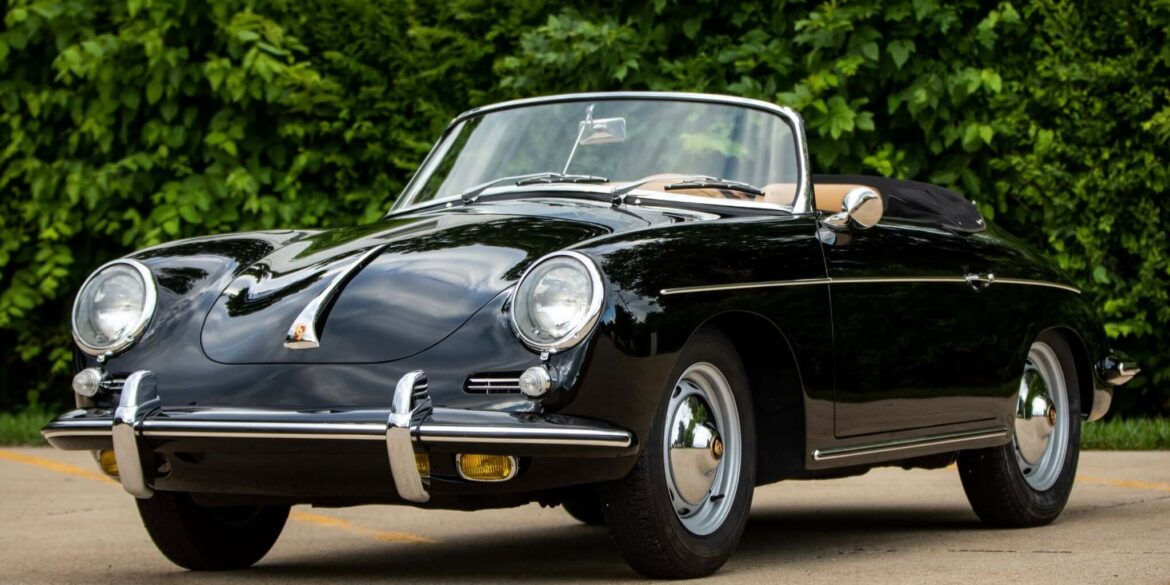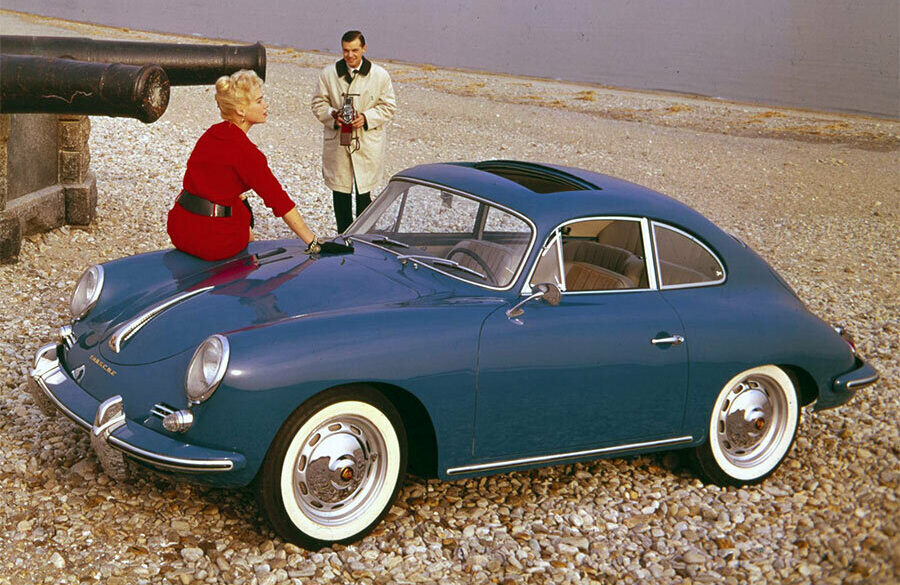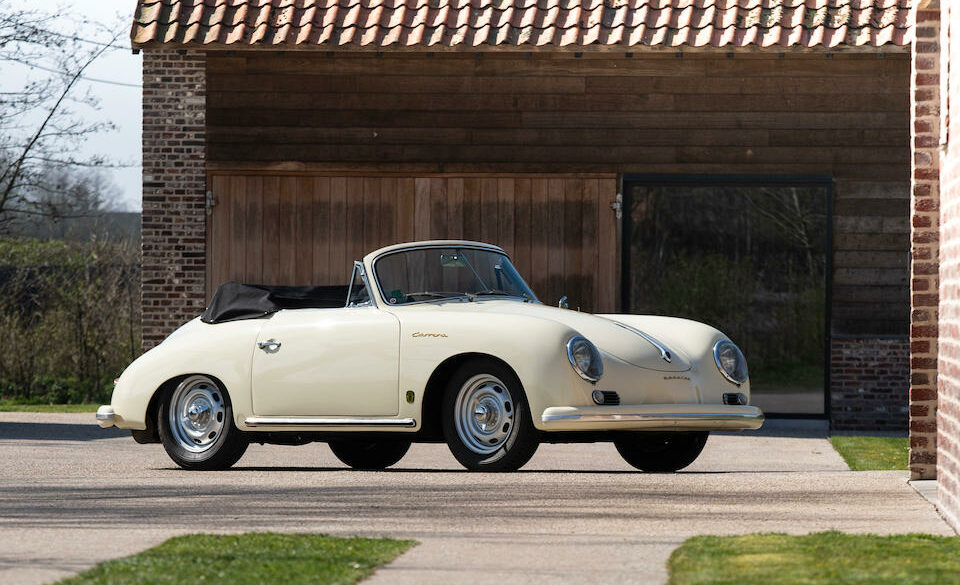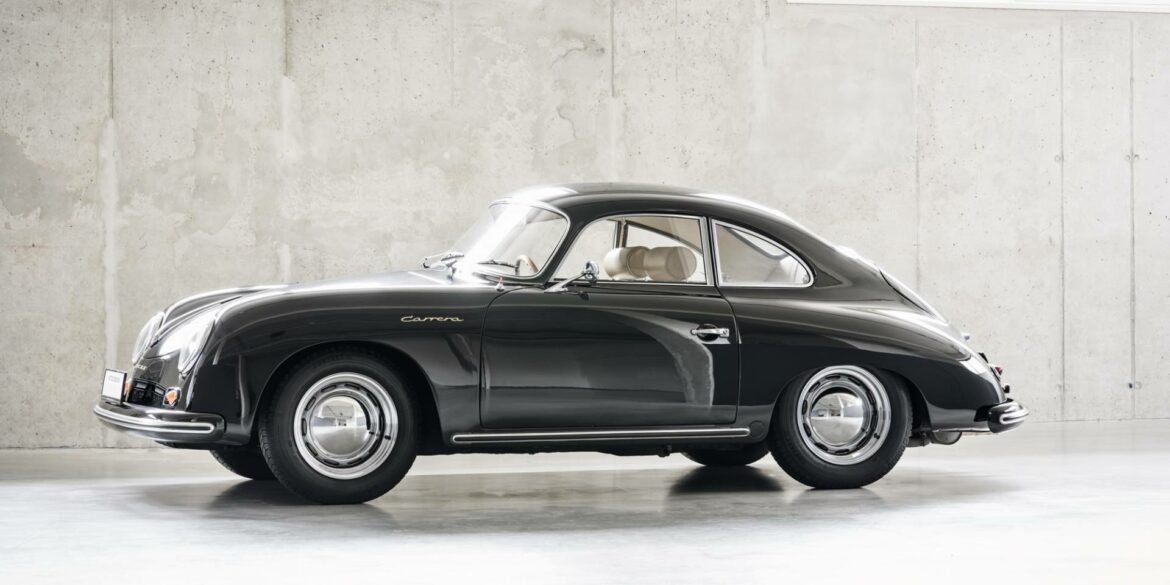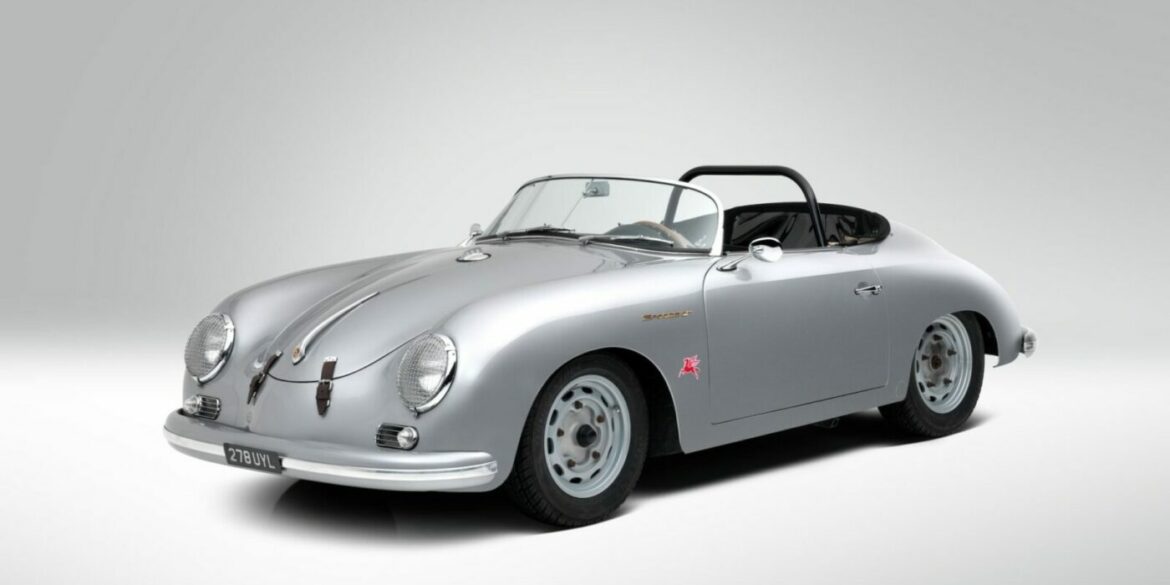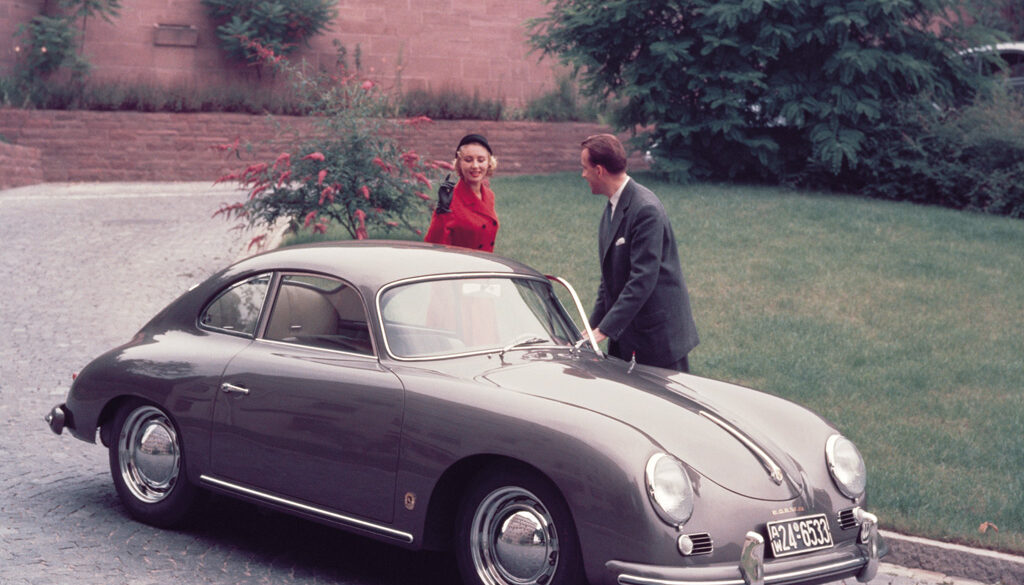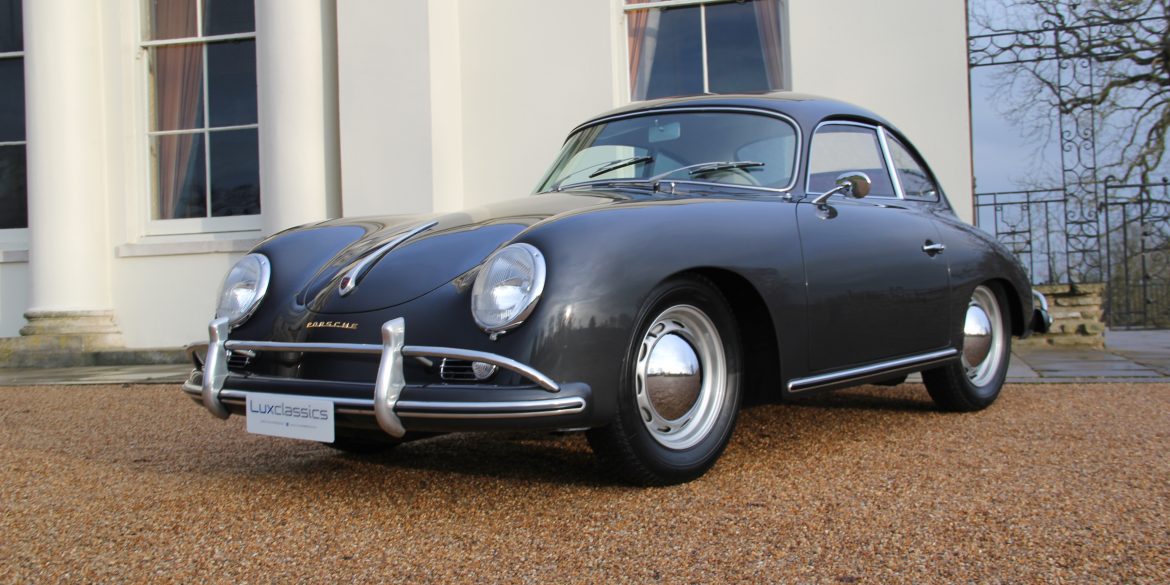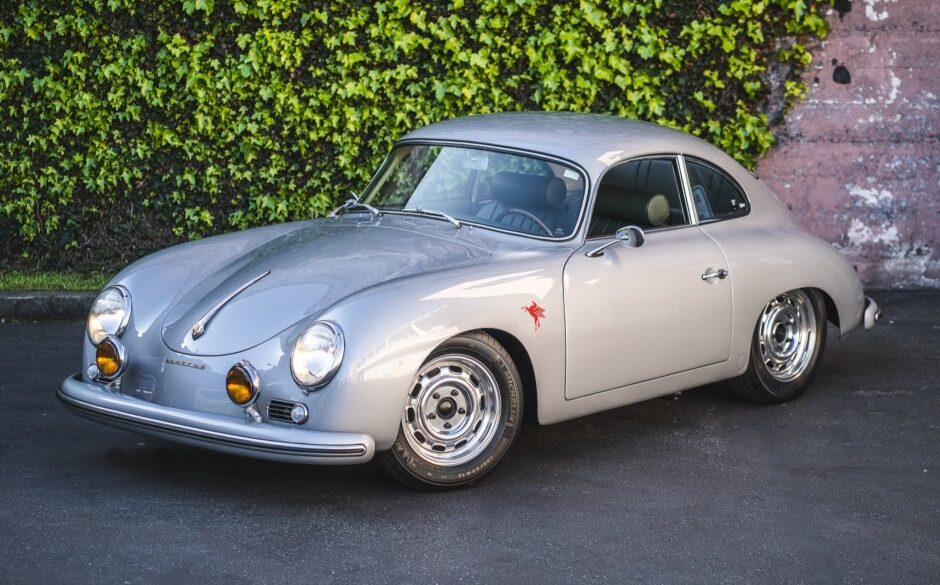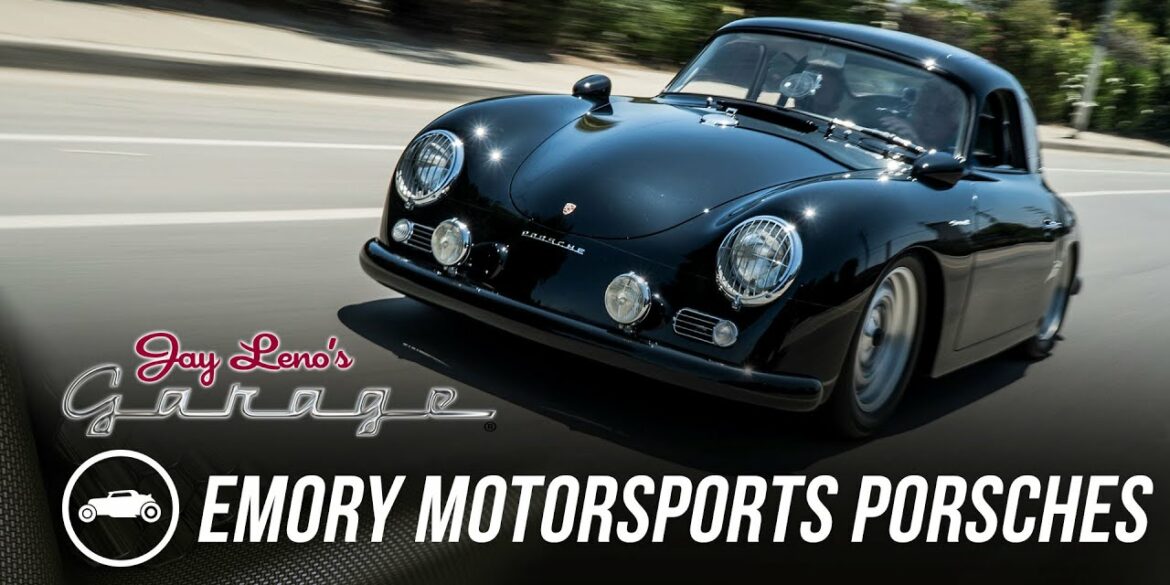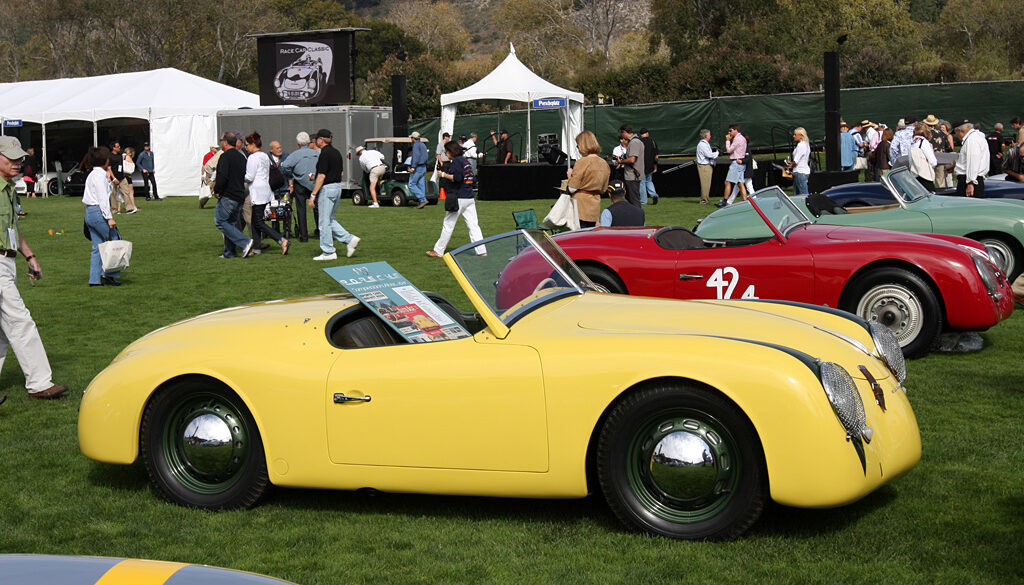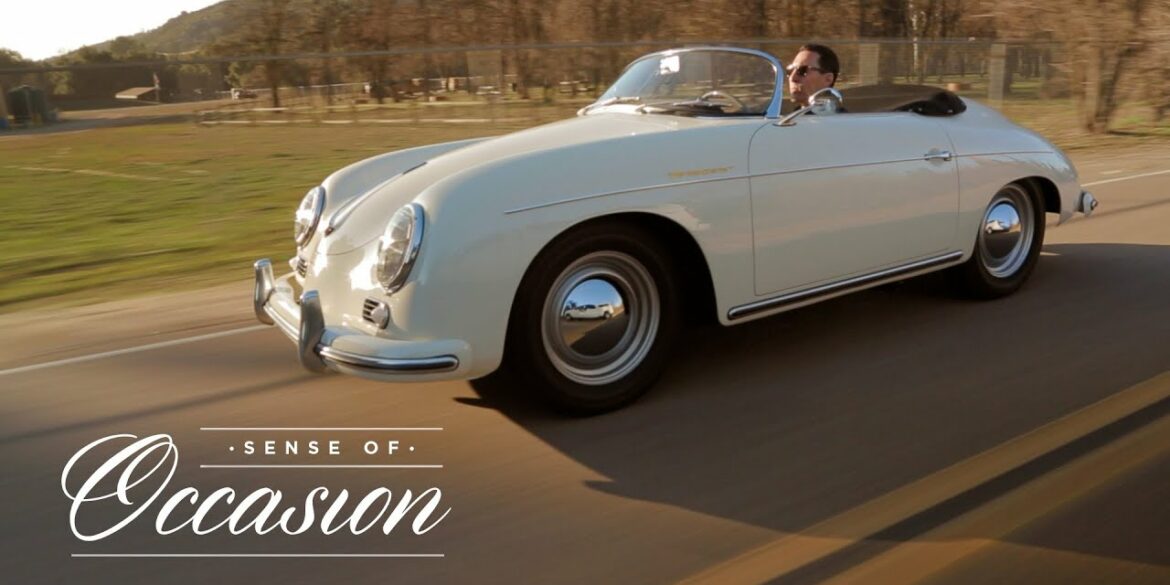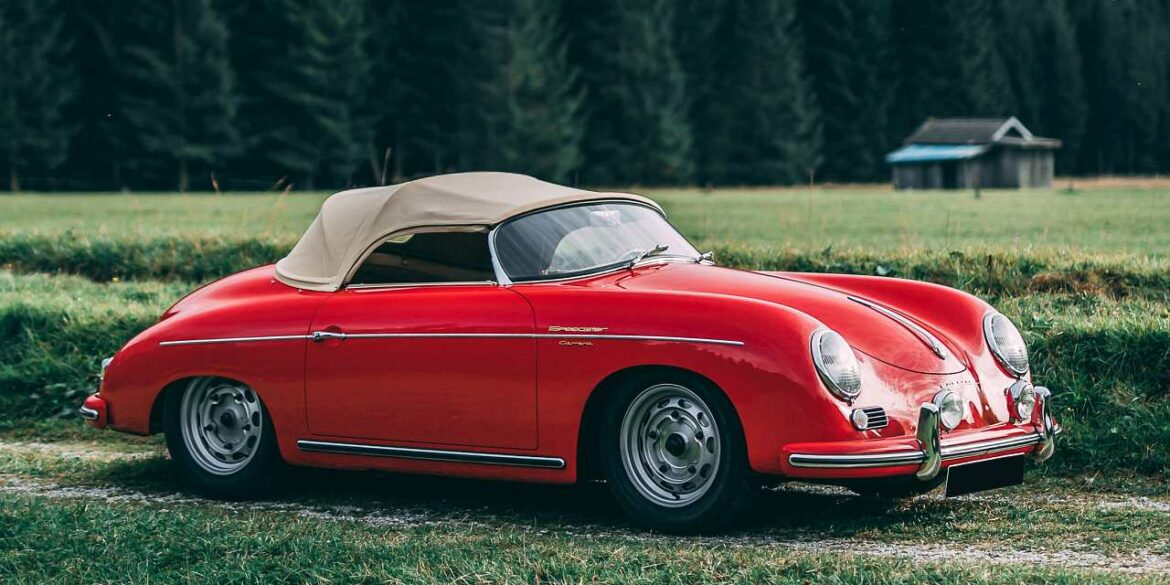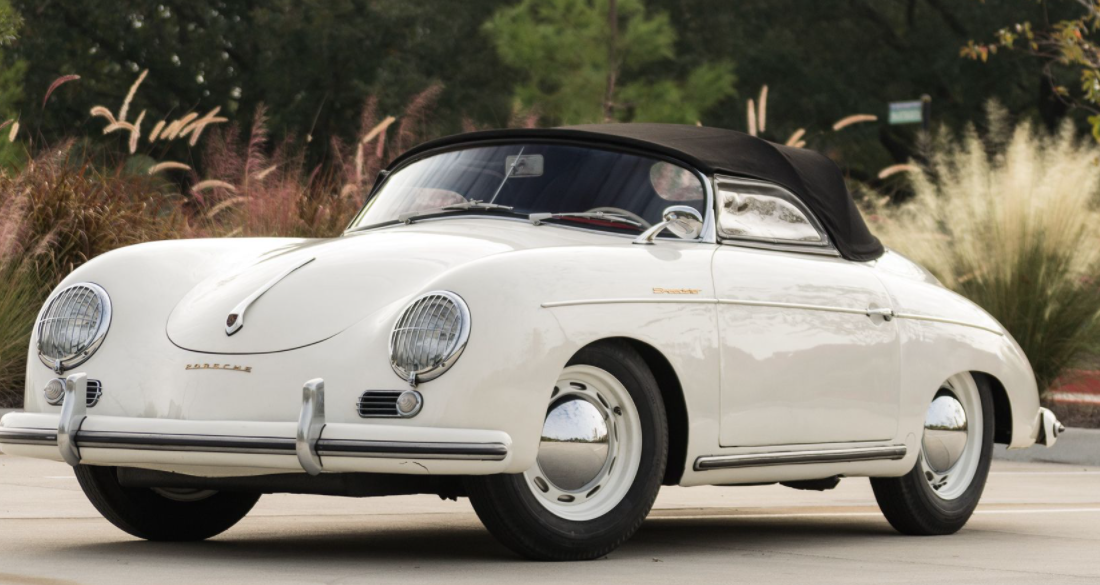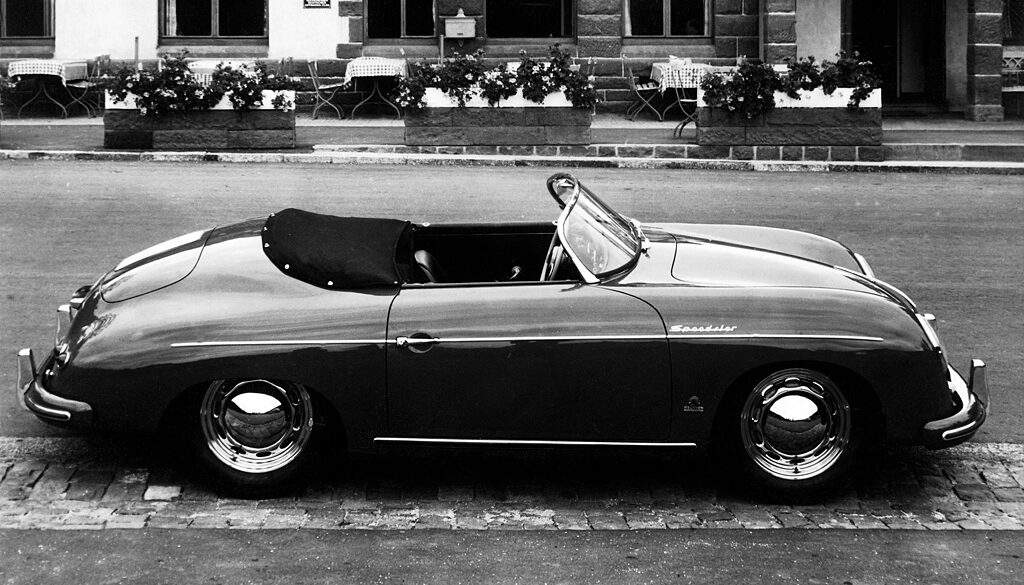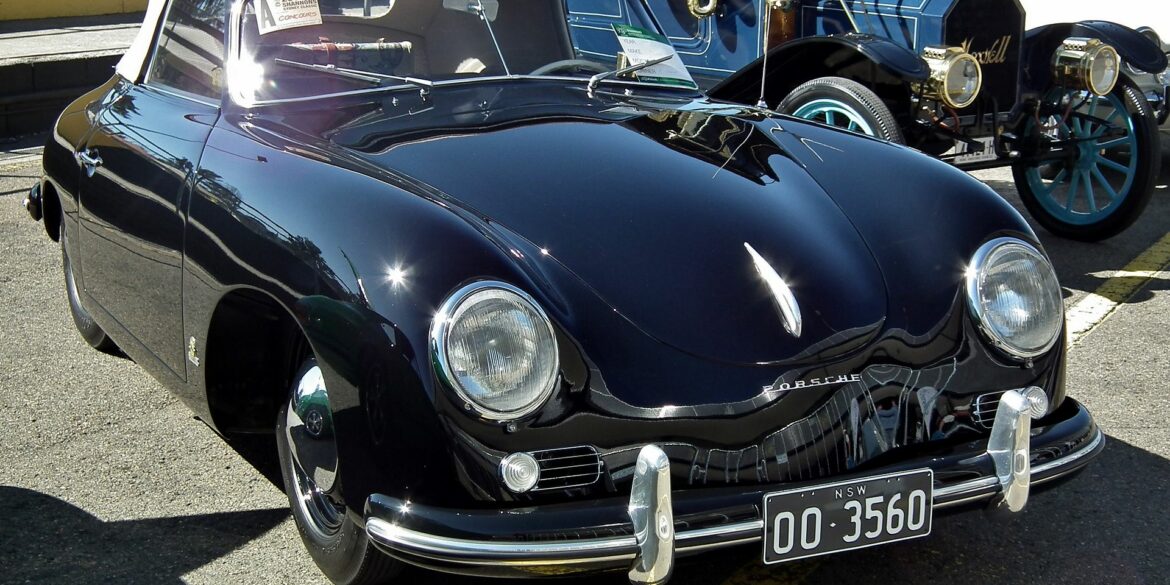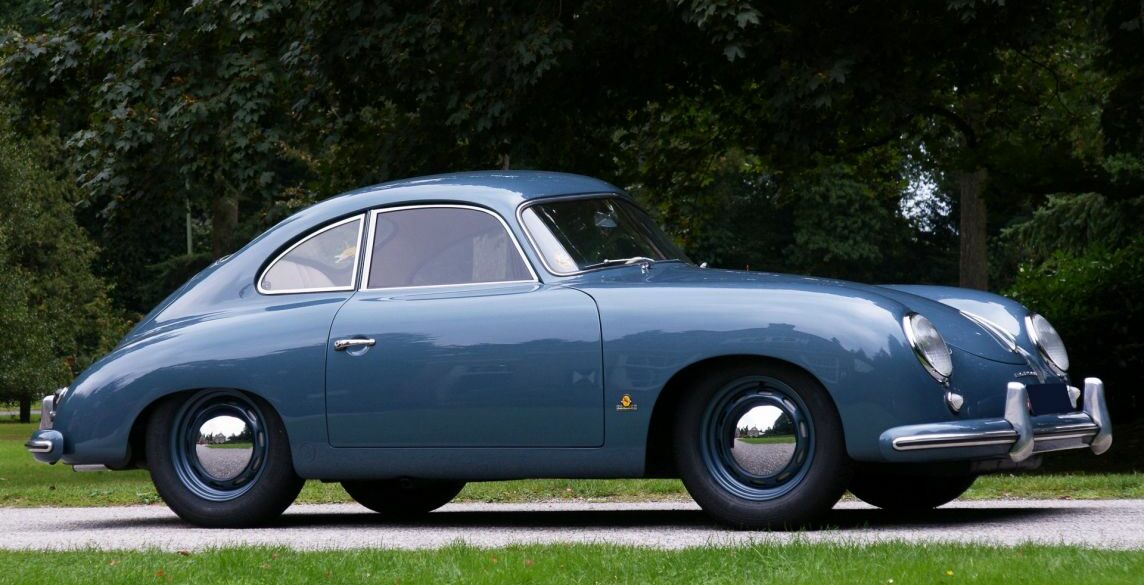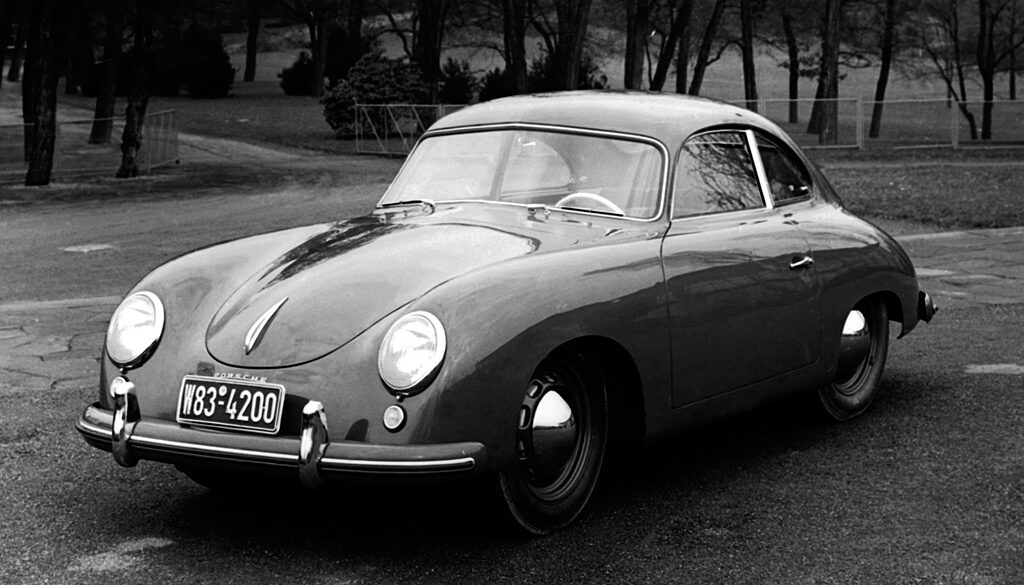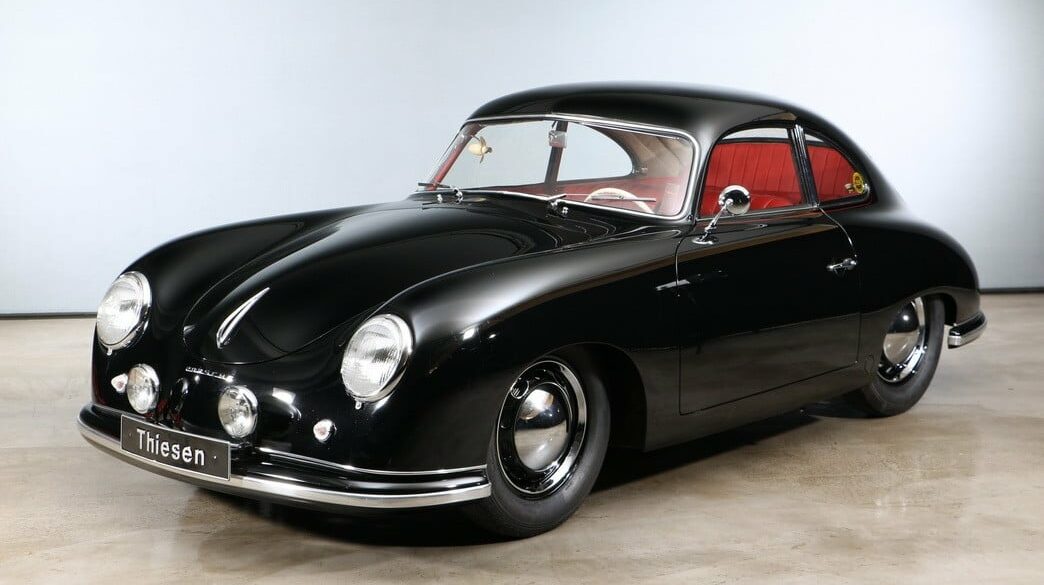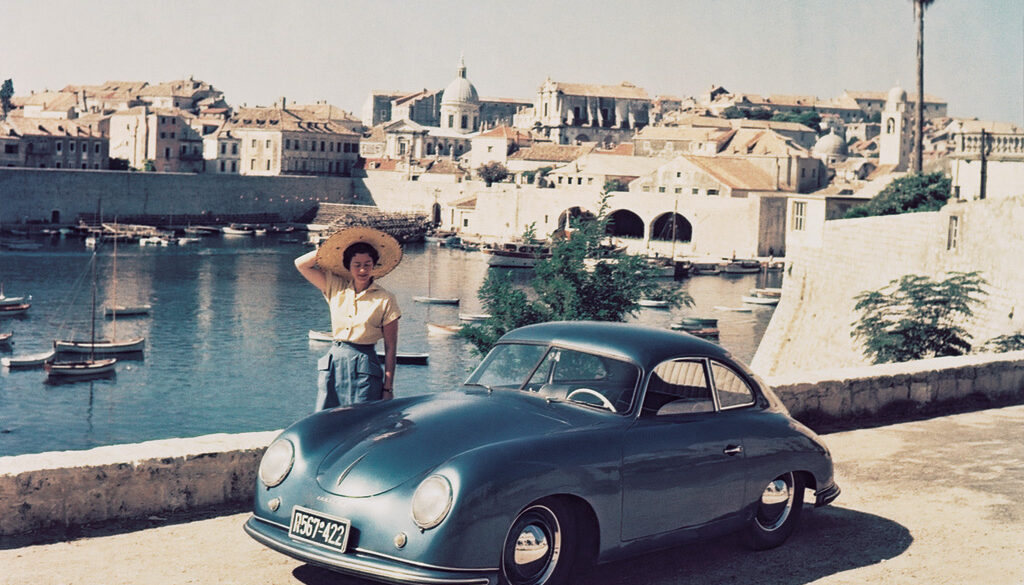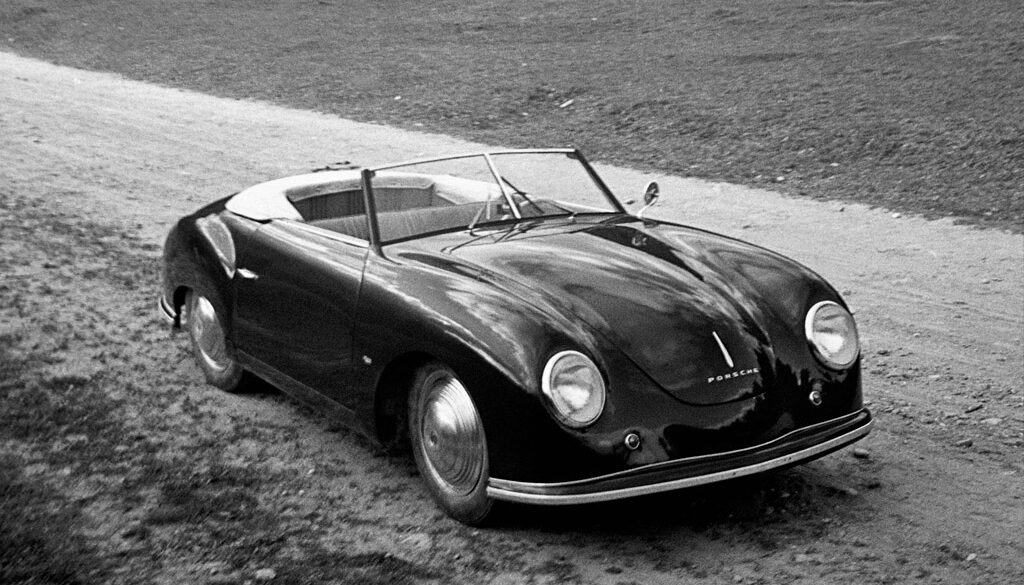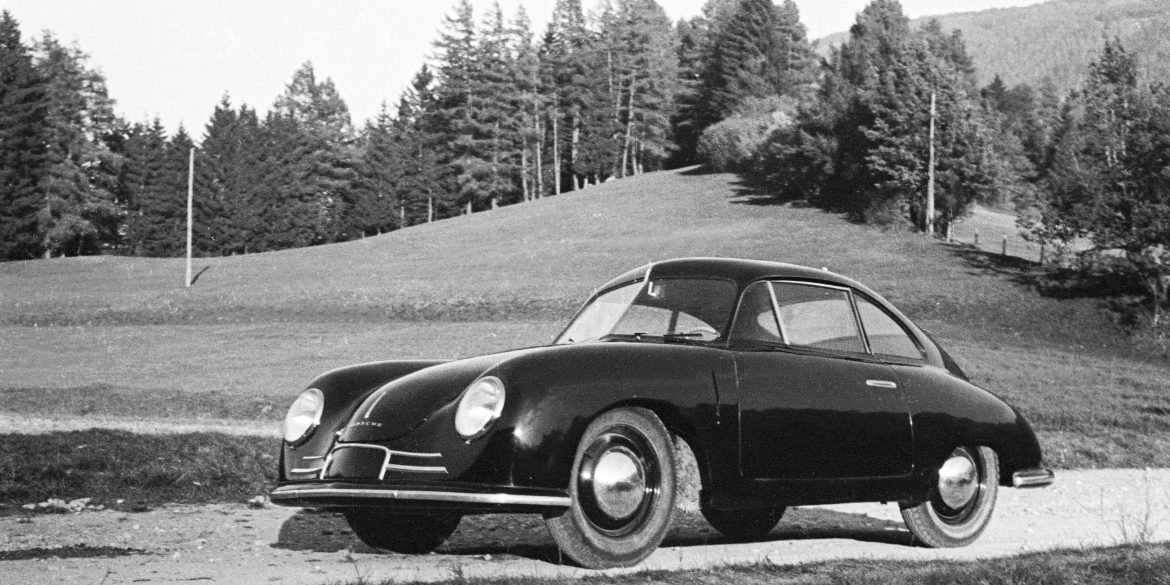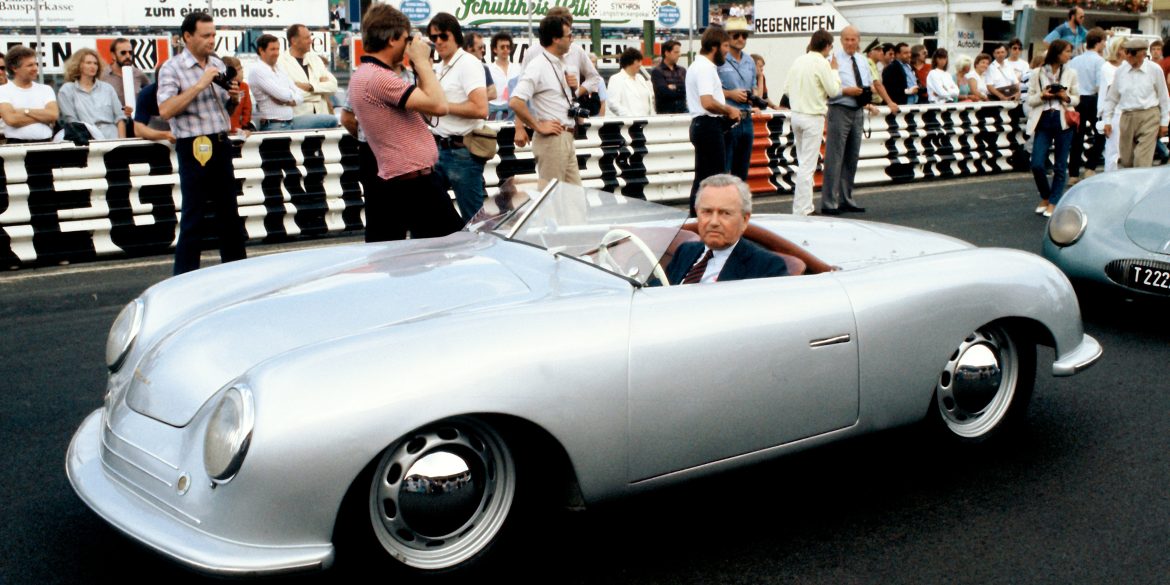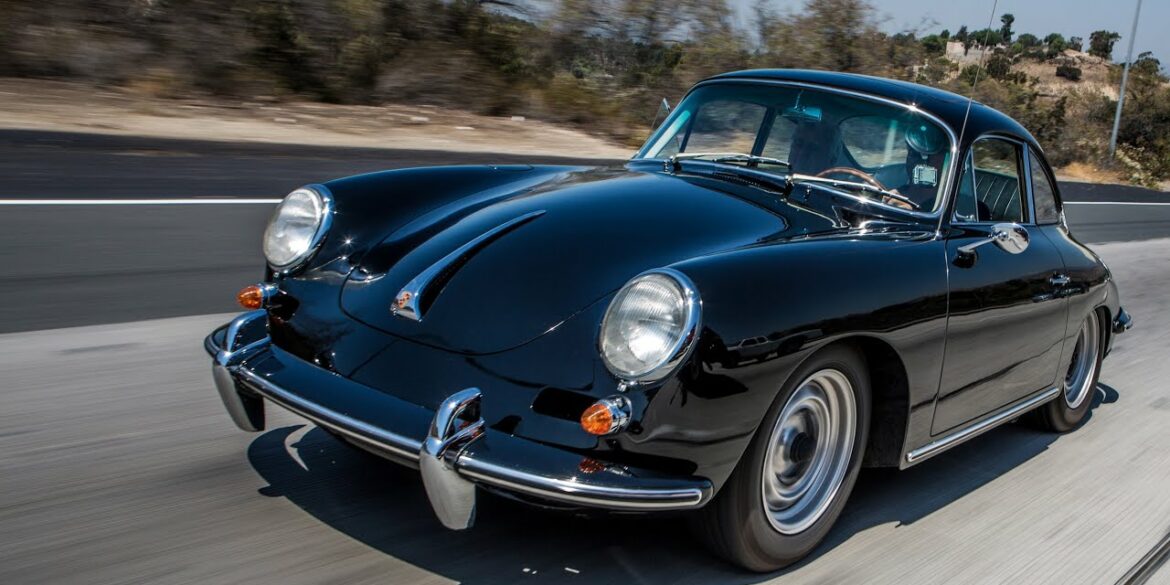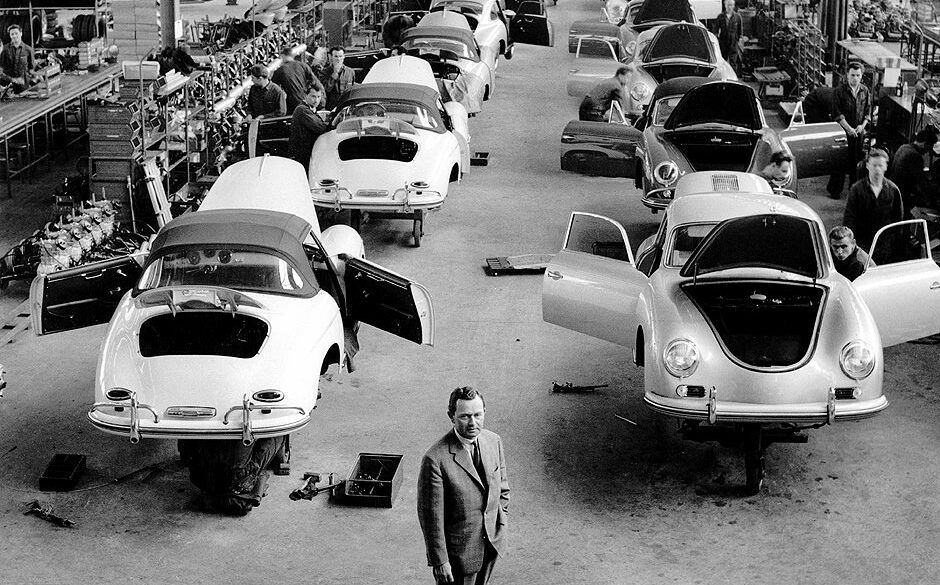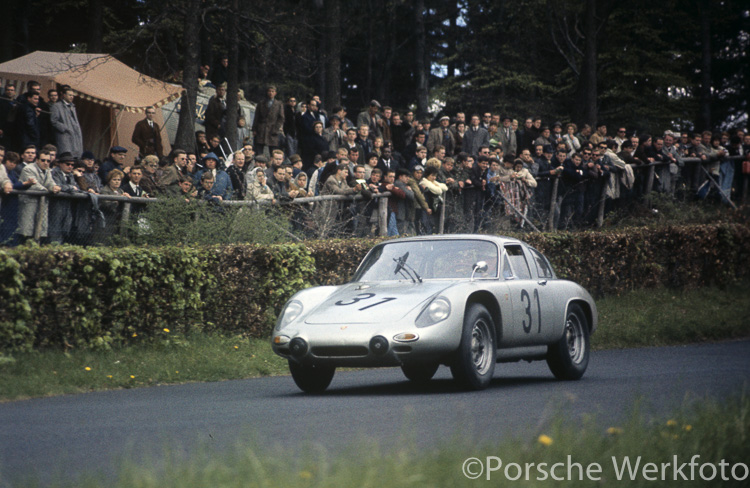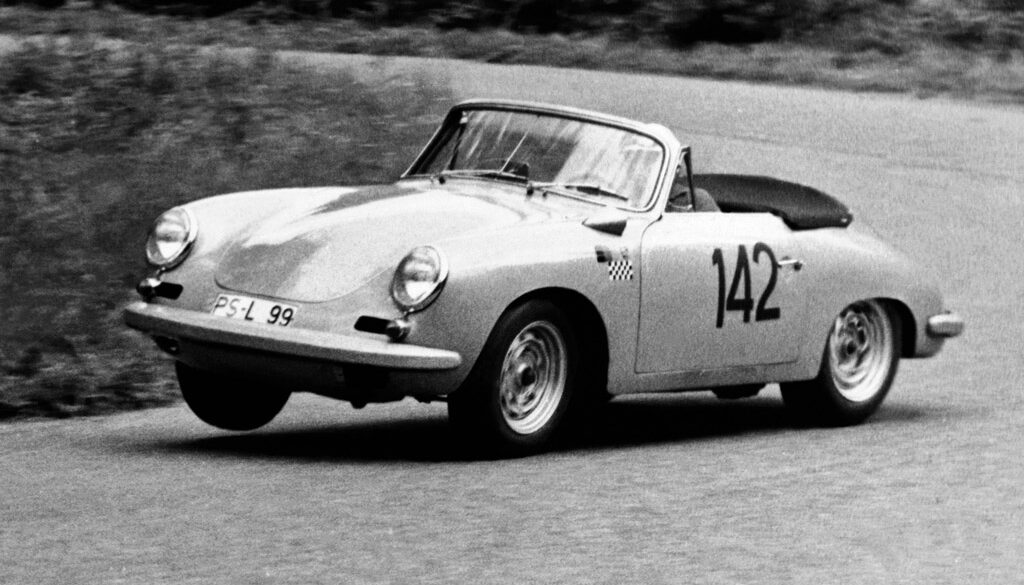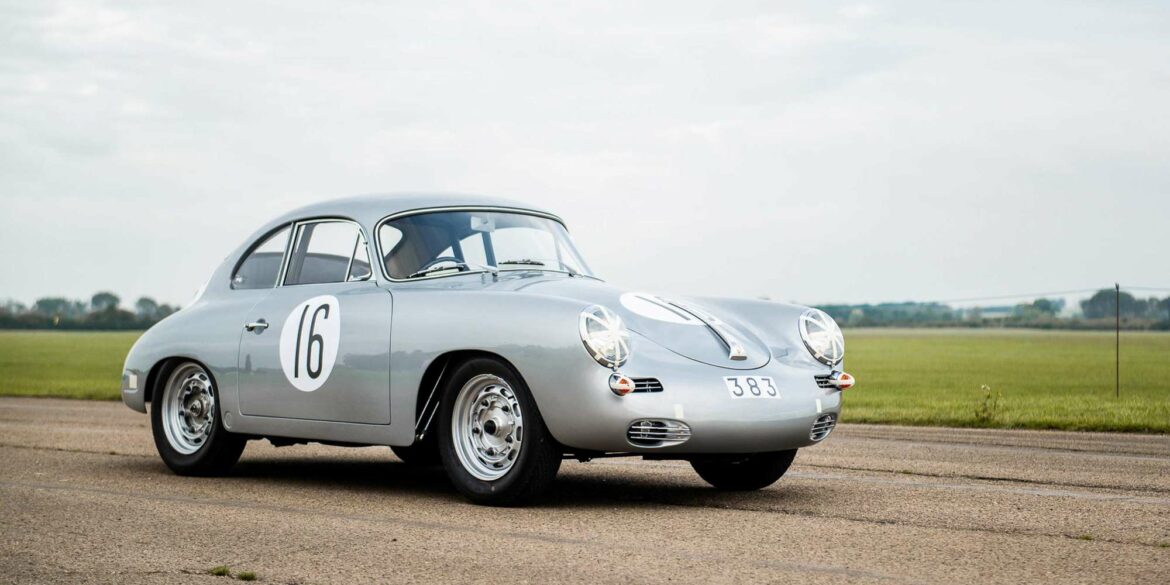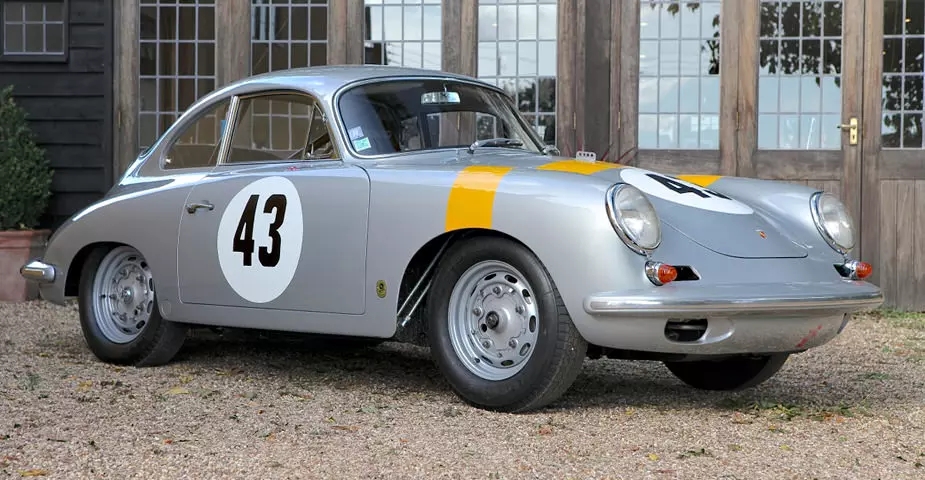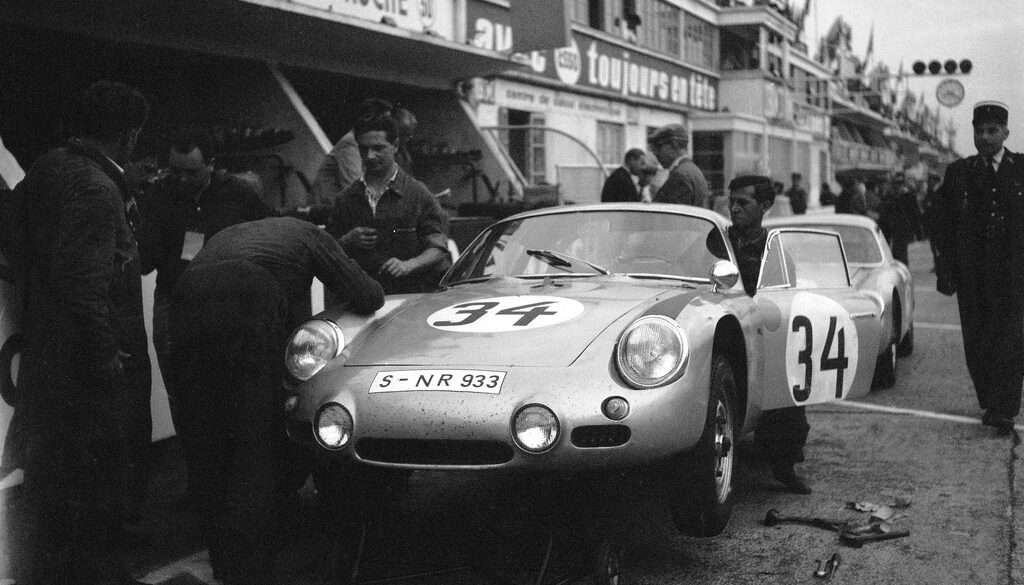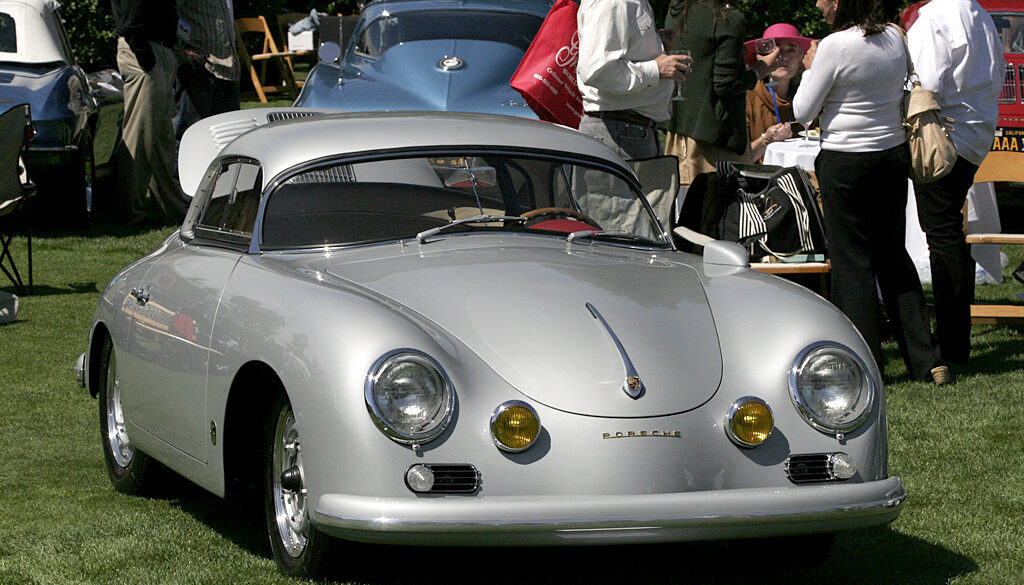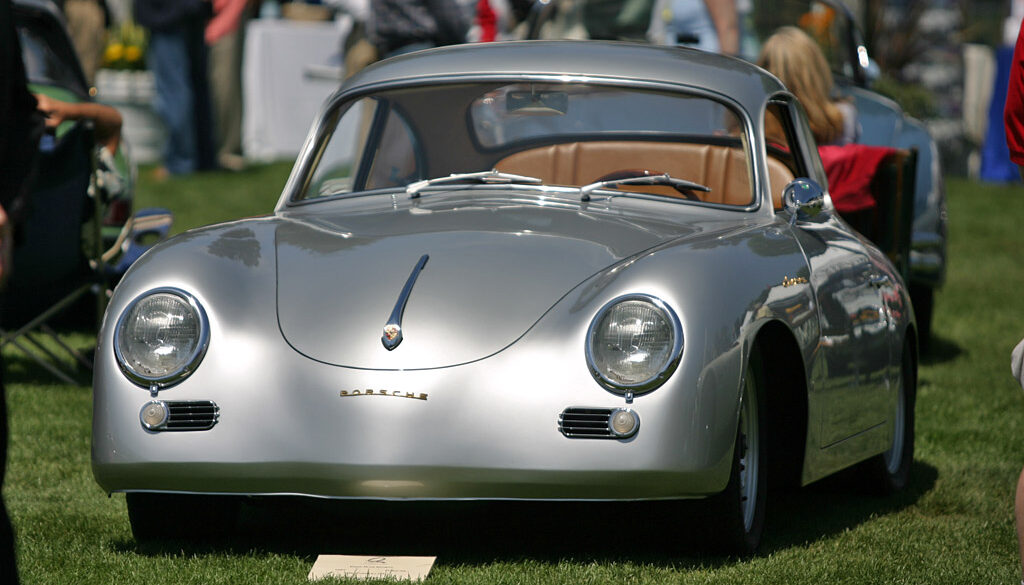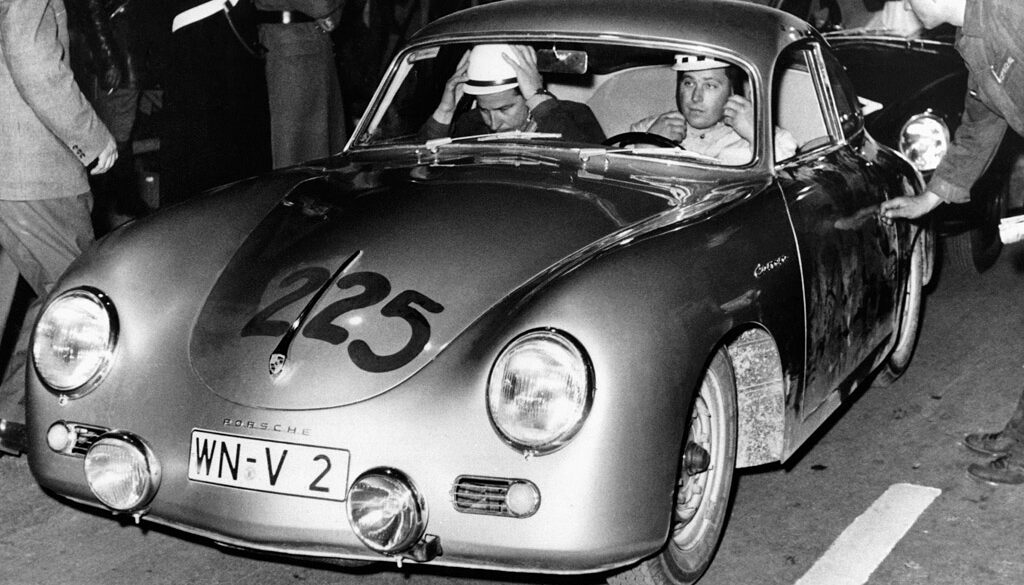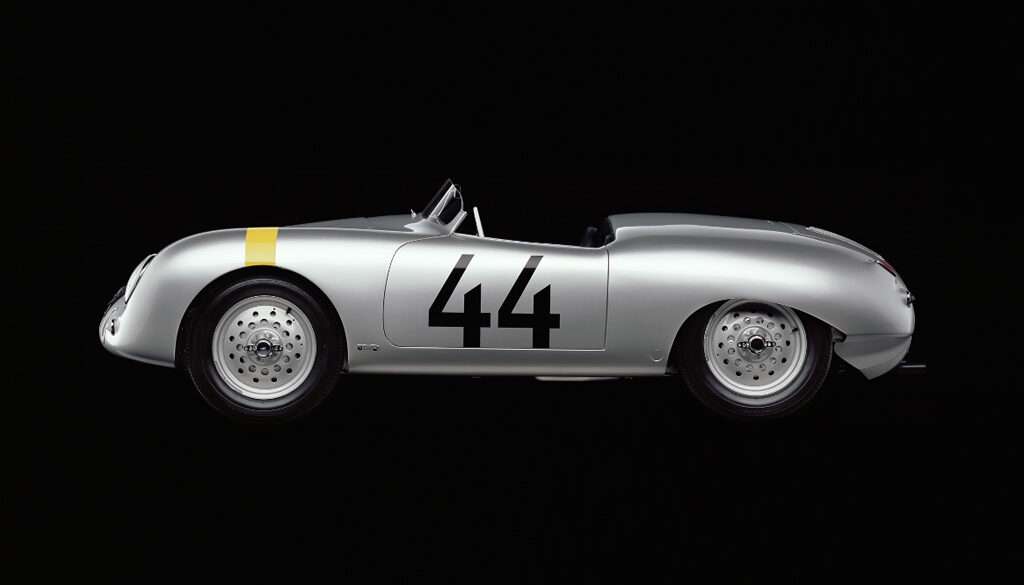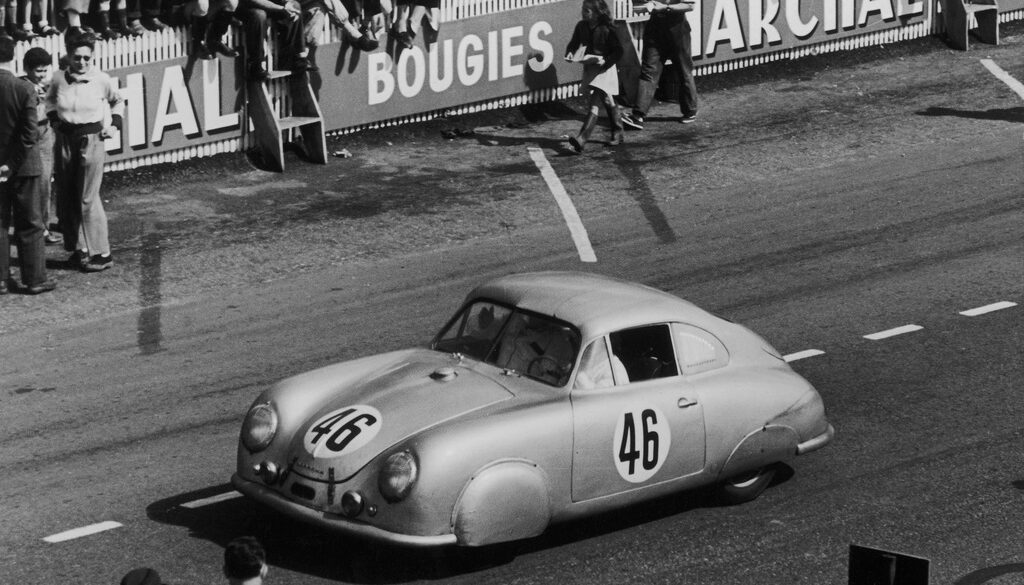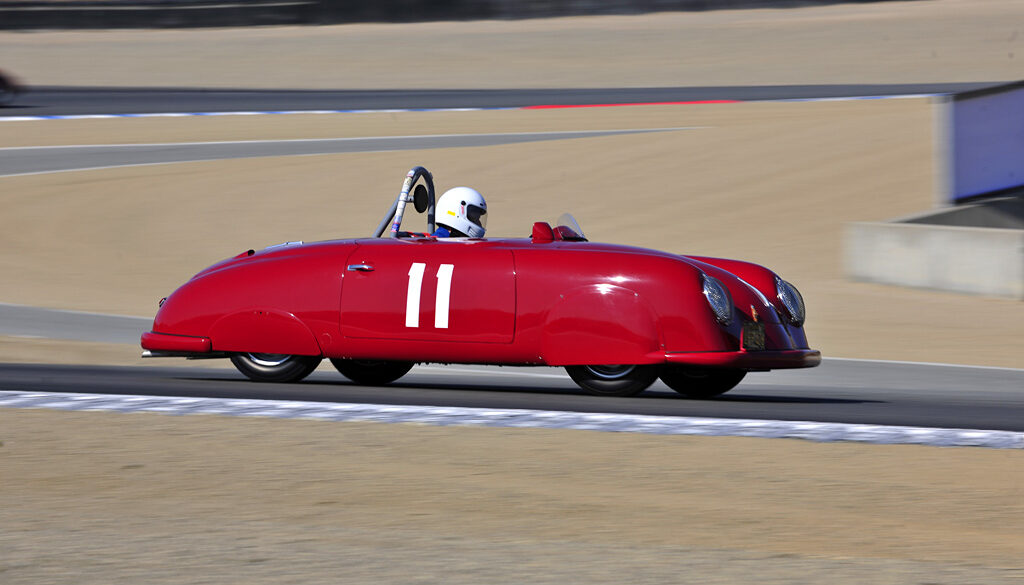Kim Copperthite watches the Porsche 919 Hybrid Evo during its record run at the Porsche Rennsport Reunion VI, Laguna Seca, 2018 (© Mike Copperthite) It is interesting how, sometimes when you trace an old classic car or historic racer back to its roots, you end up not far from the...
Porsche 356
The Porsche 356 was the first production car from Porsche. Earlier cars designed by the company included Cisitalia Grand Prix race car, the Volkswagen Beetle, and Auto Union Grand Prix cars, but it was the 356 that changed things forever for sports car enthusiasts the world over. Ferdinand Porsche, Sr. founded the company that still bears his name, but it was his son Ferdinand, widely known as Ferry, who created the Porsche we know today. In the early years after WWII, the 356 was the car that made Porsche famous. See our Porsche 356 Research Hub
How we made the 1959 Emory Outlaw RHD Coupe in GT Silver How we made the 1959 Emory Outlaw RHD Coupe in GT Silver. This is the inaugural installment of a class of videos we call “walk arounds” to give our friends and fans an inside look at how we do...
How to Convert a Classic into An Electric Car...
Video featuring Tordoff’s impressive run from last to 2nd in his Porsche 356 in the Fordwater Trophy at the Goodwood Revival 2018 No Subscription? You’re missing out Get immediate ad-free access to all our premium content. Get Started Already a Member? Sign in to your account here....
A father/son project gets driven This is a fully restored 1965 Porsche 356C, the final year of the 356. A father/son project, it features a punched-out 1780cc engine, mild outlaw body work, and a rally-inspired interior with fresh hides and rare vintage Tag Heuer rally clocks. Though it’s incredibly slow,...
We Love This 1964 Porsche 356 Why does Catherine Sutton drive? Because looking after her car is a choice, not a chore. She presides over her 1964 Porsche 356 with its wrinkles and patina as if it were a loved one, carefully operating the clockwork of its clutch and accelerator,...
THE GENESIS OF PORSCHE MOTORSPORT…watch the restoration by Rod Emory of the #46 Porsche 356 SL that won its class at the 1951 Le Mans 24 Hours, captured in this super video by Rennfilms No Subscription? You’re missing out Get immediate ad-free access to all our premium content. Get Started...
Weissach – Porsche Werk 8 – on 9 June 2016 By the late 1950s, the German Wirtschaftswunder was well underway and as the economy grew, so traffic density increased. This was particularly noticeable around Stuttgart often making testing on local Autobahnen inconvenient and it caused Ferry to think about creating...
Hans Herrmann at the Retro Classics in Stuttgart, Germany 2010 Hans Herrmann, one of the most successful and popular racing drivers to join the Porsche AG works team, celebrates his 90th birthday this year on February 23. The endurance and Monoposto specialist, born in Stuttgart in 1928, is regarded as...
1957 Porsche 356A Outlaw Chuck Olenyk turned this coulda-been shoulda-been coupe into a classic speedster with all factory parts – by himself in his home garage!...
1956 Porsche 356A is a “Sunroof Coupe” This 1956 Porsche 356A is a “Sunroof Coupe” that has been owned by the current owner since 1990. It is powered by the original 1600CC engine making approximately 85 horsepower and, as a restored driver example, is a delight to wheel around....
It’s rare for a car to be considered as a part of a family. But this Porsche 356 Speedster managed to become not just a car but a family member as well. Watch the video to know more about this interesting story. ...
Celebrations for the #55 Porsche 550 Spyder after finishing third in the 1954 La Carrera Panamericana. Sitting on the #55 car is Herbert Linge (left and Hans Herrmann (right). Sitting on the #56 car is driver Jaroslav Juhan with Porsche PR supremo Baron Huschke von Hanstein standing between the drivers...
Back in 2012 I found a car in Tuscon Arizona, it was a 1958 Porsche 356A T2 coupe. It was in terrible condition and was owned by a former gold miner by the name of Jonathan Marshall. The car had crates for floor panels, most of the interior was in...
1956 Porsche 356 C “When you’re out there in something like this, people just stop and…it might not even look like a car at first…it might look like a small spaceship floating around out there,” says Matt Hummel, adding, “this is my favorite car to get lost in”. A mis-spelled...
Porsche Racing Royalty Jay meets Rod Emory of Emory Motorsports to hear the story of the restorations of this remarkable racer hailing from the dawn of Porsche’s motorsports tradition....
The Outlaws Third generation SoCal gearhead Rod Emory takes Jay through his 1958 Emory Special and 1959 Emory Outlaw....
Modified his 1955 Porsche 356 Continental, Nowadays, it seems “outlaw” Porsches are everywhere and all the rage. Back in the mid-1990s, however, when Mr. Jack Griffin decided to modify his 1955 Porsche 356 Continental, he wasn’t following a customization trend or fad but, rather, taking it upon himself to build...
1956 – 1958 Porsche 356A/1500GS Carrera Speedster Pictures & Gallery...
1956 Porsche 356 C Matt Hummel’s love for vintage automobiles has led him to many interesting places, but no car has captured his imagination quite like his 1956 Porsche 356. Follow along as Matt attempts his most ambition adventure, going 20-miles off-road from Joshua Tree to Big Bear in a...
1950 – 1951 Porsche 356/1100 Split-Window Coupe (Pre-A) Pictures & Gallery...
1951 Porsche 356 SL Gmünd Coupe Pictures & Gallery...
1952 – 1955 Porsche 356/1500 Coupe (Pre-A) Pictures & Gallery...
1952 – 1955 Porsche 356/1500 Cabriolet (Pre-A) Pictures & Gallery...
1964 Porsche 356C/2000GS Carrera 2 Pictures & Gallery...
1964 – 1965 Porsche 356 C 1600C Coupe Pictures & Gallery...
1964 – 1965 Porsche 356 C 1600C Cabriolet Pictures & Gallery...
1962 – 1963 Porsche 356B/2000GS Carrera GT Pictures & Gallery ...
1956 – 1959 Porsche 356A/1600 Coupe Pictures & Gallery...
1959 Porsche 356A/1600 Convertible D Pictures & Gallery...
1956 – 1959 Porsche 356A/1600 Cabriolet Pictures & Gallery...
1957 – 1958 Porsche 356A/1500GS Carrera GT Coupé Pictures & Gallery...
1956 – 1959 Porsche 356A/1500GS Carrera Cabriolet Pictures & Gallery...
1956 – 1959 Porsche 356A/1500GS Carrera Coupe Pictures & Gallery...
1954 – 1955 Porsche 356/1500 Speedster Pictures & Gallery...
1955 Porsche 356/1500 Continental Coupe Pictures & Gallery...
1955 Porsche 356/1500 Continental Cabriolet Pictures & Gallery...
1960 – 1961 Porsche Abarth 356B Carrera GTL Pictures & Gallery...
1952 Porsche-Glöckler 356 Roadster Pictures & Gallery...
Amongst Porsche 356 enthusiasts, perhaps no model is more coveted than a C-Series Carrera 2. The Carrera 2 represents the culmination of Porsche’s racing technology fitted into a road car package and the ultimate performance-first sports car in the 356 model lineup. The 1,966-cubic centimeter, mechanically complex four-cam Type 587/1 engine was the most powerful unit that Porsche had ever created for a production car, developing 130 brake horsepower at 6,200 rpm.
Introduced in 1963 for the 1964 model year, the base model Porsche 356 1600C Coupe was presented as the entry-level version of the last generation of the Porsche 356 Coupes. After offering standard/base model versions for the 356 A and 356 B with 60 HP engines, Porsche dropped the standard version as its base model and introduced the successor of the former mid-level 1600 Super engine variant with 75 HP, as the entry-level engine option for the 356 C generation. As with previous generations, it was also offered with the 356 C Cabriolet cars.
No Subscription? You’re missing out Get immediate ad-free access to all our premium content. Get Started Already a Member? Sign in to your account here....
The original Porsche Carrera Zagato Speedster, the first Zagato bodied Porsche of the brand’s history, was built in 1958 for French gentleman driver and expert Porsche pilot Claude Storez, one of the best French pilots of that time. He started his career in early 50s and became soon a skilled pilot. In late ’57 he was looking for the “ultimate” 356 for the 1958 races season. He put an order to Porsche AG for a 356 A Speedster (the lightest version available) with a Carrera engine and GS specs (the most powerful at that time).
Ferry Porsche had in fact requested Swiss technicians to make a less sporty and more elegant version of the 365 B and thus the 1600 Beutler Coupè was born. This project is a 2+2 based on a Porsche 1600. Like the Porsche, the car is built on a VW platform, but includes Porsche elements such as the brakes and the engine. It was built in 5 copies before production was stopped in 1957 due to a change in commercial strategies by the German company.
1958 – 1959 Porsche 356A/1600GS Carrera GT Coupé Pictures & Gallery...
1958 – 1959 Porsche 356A/1600 Super GT Speedster Pictures & Gallery...
1952 Porsche 356 ‘America Roadster’ Pictures & Gallery...
1959 – 1963 Porsche 356B/1600 Cabriolet Pictures & Gallery...
1959 – 1963 Porsche 356B/1600 Coupe Pictures & Gallery...
1960 – 1961 Porsche 356B/1600 Super 90 GT Coupe Pictures & Gallery...
1959 – 1963 Porsche 356B/1600 Roadster Gallery Porsche 356 B 1600 Roadster (T5) – Pictures & Gallery Porsche 356 B 1600 Roadster (T6) – Pictures & Gallery...
1962 – 1963 Porsche 356B/2000GS Carrera 2 Pictures & Gallery...
1963 Porsche 356B/2000GS Carrera 2 GT Dreikantschaber Pictures & Gallery...
1956 – 1958 Porsche 356A/1600 Speedster Pictures & Gallery ...
After a considerable absence of a Carrera model in the 356 model lineup, Porsche finally made another version with the introduction of a 2.0-liter engine. As with the earlier versions, the Carrera was offered both in a Carrera GT Deluxe version for the road and the Carrera GT for racetrack duties. Unlike these earlier models, the new car benefited from the 2.0 liter engine introduced as the Carrera 2 in September 1962.
In September of 1959 Porsche revealed their fully updated 356 known as the 356B. This had a completely revised body that was more suitable for the American market. New to the model was the Type 616/7 Super 90 engine which was an indirect replacement for the Carrera de Luxe models. The engine was fully revised with a new intake manifold, a larger Solex 40 PII-4 carburetor and the Carrera air filters.
In September of 1959 Porsche revealed their fully updated 356 known as the 356B. This had a completely revised body that was more suitable for the American market. The 1600 Super was also known as the 1600 S and that is what we are covering on this page. The 1600 Super sat in the middle of the lineup, below the Super 90 and above the base 1600. There were several variants with the base 1600 S engine, including the Coupe, Cabriolet, Notchback Coupe and Roadster, across both the T5 generation and T6 generation.
The 356 B T5 Coupe was the direct replacement of the Porsche 356 A Coupe. The T5 Coupe bodies were produced by German coachbuilder company Reutter. The 356 B T5 Coupe played a huge role in the growth seen by Porsche in the early 1960s. Like the Cabriolet, Roadster, and Notchback Coupe siblings, the Coupe was offered with 1600, 1600S, S90, and Carrera engine options paired to a four-speed synchromesh 741 transmission. In late 1961, Porsche introduced the T6 body and updates, which built on the success of its very popular predecessor.
Of all the Carreras, the 1959 de Luxe was best suited for the road. Not only was it the most luxurious 356, but it was also was the only year to get the large 1600cc 4-cam engine. The Type 692/2 engine was a much different engine than the 1500cc unit it replaced. The newer unit used plain main bearings instead of roller bearings. Furthermore, the distributors were moved to the end of the crankshaft and the engine shroud was better attached to the 356A body. With twin Solex carburetors, the somewhat detuned version offered 105 bhp @ 6500 rpm.
Available in all body styles, the Porsche 356 A Carrera featured the race car-derived 1500 cc four-cam engine (type 547) developed for the Porsche 550 Spyder. Rated up to 110 hp, it was the top performance 356 A model available. Variants included the Carrera 1500GS and Carrera 1500GT, differentiated by their horsepower. In 1958, Porsche updated the Carrera engines (now type 692), increasing the displacement up to 1600 cc and output increased to 105 and 110 hp respectively. In 1959 horsepower for the GT increased again to 115.
Despite looking outwardly similar to the preceding models, Porsche thoroughly updated their 356 line in 1956 and called their new model the 356A. At the core, this included a larger 1600 cc engine, but also a curved-glass windshield and a thoroughly revised suspension. At the 1955 Frankfurt Motor Show in September of 1955, Porsche released the 356A/1600 to the world with cabriolet, coupe and speedster bodies from Reutter. The 356A/1600 was a great performer, good for a sprint to 60 mph in 13.5 seconds and hit a top speed of 109 mph.
Despite looking outwardly similar to the preceding models, Porsche thoroughly updated their 356 line in 1956 and called their new model the 356A. At the core, this included a larger 1600 cc engine, but also a curved-glass windshield and a thoroughly revised suspension. At the 1955 Frankfurt Motor Show in September of 1955, Porsche released the 356A/1600 to the world with cabriolet, coupe and speedster bodies from Reutter. Produced in 1959 only, the Porsche 356 Convertible D was the replacement for the 356 A Speedster, which was discontinued after 1958.
From the outside, the 356A kept to the Porsche mantra of stepwise evolution. The new model was outwardly identical to the previous version except for the wider tires, a small rub-strip below the doors, a fully-curved front window and enamel paint replacing lacquer previously used. The 356 A came with an all-alloy air-cooled Flat 4 engine in four states of tune, with the 1300 having Type 589/2 engine with 60 bhp and 65 lb-ft of torque.
From the outside, the 356A kept to the Porsche mantra of stepwise evolution. The new model was outwardly identical to the previous version except for the wider tires, a small rub-strip below the doors, a fully-curved front window and enamel paint replacing lacquer previously used. The 356 A came with an all-alloy air-cooled Flat 4 engine in four states of tune, with the 1300 having Type 506/2 engine with 44 bhp and 60 lb-ft.
Slate Grey Porsche 356 Dr. Anand Rajani takes Jay through his beloved Porsche, restored by an old friend of Big Dog Garage, John Willhoit....
A Drive In An Emory Outlaw 356 Third generation SoCal gearhead Rod Emory takes Jay through his 1958 Emory Special and 1959 Emory Outlaw....
This isn't technically a Speedster, but the Type 540 (Typ 540 K/9-1 to be very precise) - known more commonly as the America Roadster - started the idea. The American Roadster was the direct predecessor of the Speedster. U.S. importer Max Hoffman convinced Porsche it needed a lightweight convertible to compete. It only had an emergency folding roof and could keep up with larger sports cars of the era. But the production methods used to create the America Roadster’s aluminum body proved to be too expensive, and in 1952 Porsche built only 21 units before its discontinuation in 1953.
A Drive In A 1956 Porsche 356A T1 Speedster Starting any classic car is special. There is the sensation that something distinct and superior is taking place because of the rituals observed and details you notice. On this 1956 Porsche 356A T1 Speedster for example the windscreen is removable, the...
Beginning in 1954, a new version of the Pre A 356 was introduced that is now known as the Porsche 356 Pre-A Carrera, with a powerful engine that was available in coupe, cabriolet, and Speedster variants. Highly desirable today, the Carrera name denotes the race inspired 1500 cc four cam motor that produced an astounding 110 hp. Approximately 97 of these motors were produced sometime between 1954 and early 1955. The Carrera versions would continue in the next generation 356 as the Porsche 356 A Carrera.
Generally speaking the early models or so called ‘Pre A 356′ models are more desirable than the later models. At the top of the pyramid and the most exclusive is the Carrera version which carries the legendary 4 cam ‘Fuhrman’ engine. But just below that comes the ‘Super’ speedster. The ‘super’ version had more horsepower (75 vs the standard 60) and the powerful ‘type 528 engine’ for the 1500 Super version.
An export hit, built in response to customer demand: the American importer Max Hoffman requested a Porsche costing less than 3,000 dollars for his market. The 356 Speedster was the answer, naturally with a spartan equipment specification. But the lightweight car was a big hit in the USA. It was used mainly for motor racing and soon became a regular feature of the motor sport scene.
In 1953, the 1300 S or "Super" was introduced, and the 1,100 cc engine was dropped. The 360 1300 Super boasts a power improvement to 60 BHP with Porsche's "Super" engine in the Porsche 356 model range. Minor visual differences were implemented such as front indicators integrated with the horn grilles and bumpers protrude from the body with over-riders. In June 1954, the plain-bearing 1300cc engine switched over to the same block as the 4cc larger roller-bearing variant.
Towards the end of 1951 Porsche introduced a larger version of the flat four engine. It was offered alongside the original 1.1 litre engine. It took a lot more effort to develop the third variation on the four cylinder theme; the '1500.' Introduced in the 356 1500 during 1952, the engine produced 55 bhp. Porsche's competition department reworked the 1500 engine with hotter cams and bigger Carburetors, boosting power to 70 bhp. In 1952 this engine found its way into a new road car; the 356 Super.
The 1500 was Porsche’s newest engine which was quickly fitted with 40 PIBC Solex carburetors to produce 60 bhp @ 5000 rpm in 1952. These retained the Hirth roller-bearing crankshafts which gave Porsche enough clearance to enlarge their engine to 1500cc. Most cars from 1952 until the 356A of 1956 were powered by the 1500 engine but some left the factory with the smaller 1.1 and 1.3-liter engines. At the request of American importer Max Hoffman, 356s for the 1955 model year were badged as Continentals before reaching the U.S
The Porsche 356 Pre A Coupe and Cabriolet were introduced in 1950 and was available through mid-1955. Beginning in 1950 it was offered with a 1100 cc flat four that produced 40 hp. In 1951, a bigger 1.3-litre Type 506 engine was announced. It marked the first significant move away from the original Volkswagen unit. Bored from 73.5mm to 80mm (stroke was unchanged at 64mm), displacement rose from 1086cc to 1286cc. Further enhancements included lightweight alloy cylinder barrels and nosed pistons. Output rose from 40 bhp to 44 bhp and torque increased from 51 lb-ft to 60 lb-ft.
The series production didn't allow the use of handmade aluminium body panels, so, the cars were made of stamped steel panels. The first Stuttgart-built 356 have later been called as 356 Pre-A. These cars have either two separate windscreen glasses like the 356 built in Austria, or a sharply bent windscreen glass! Introduced in 1948, the Porsche 356 Pre-A Coupe was the first variant available for the Porsche 356. The engine started as a 1100 cc flat four that produced 40 hp. It was available as a coupe and cabriolet body style.
Of the 52 cars made in Gmünd, only eight were built up as cabriolets. Each was outsourced for its body and interior construction. Six cars were sent to Beutler who constructed them with a slightly different shape than the factory coupes. Included was a kicked-up rear fender line which was used on several of the Buetler cabriolets.
With lessons learned from 356 No. 1, Porsche developed the 356/2 as a production-ready version. The biggest concession to useability was repositioning the engine back behind the rear wheels as the original VW design. Like 356 No. 1, 356/2 was built as two-seat roadster using VW parts.
The Porsche 356/1 was the first real car created by Ferdinand "Ferry" Porsche. This prototype car was a two-seater open roadster with a mid-mounted, air-cooled flat-4 engine of 1,131 cc displacement. While the body was an original design, most of the mechanicals were from the Volkswagen Beetle. Only one 356/1 was made.
1963 Porsche 356 Carrera 2. When Jay was lucky enough to acquire what he calls “one of the most beautiful driving cars of all time,” he tracked down its former owner and restorer John Willhoit, who revisits the car for the first time since 1977....
The world of early Porsche production This footage was taken between late 1959 and late 1961. Great view into the world of early Porsche production...
One of the most confused of all Porsche is this DKS or Dreikantschaber. It might appear like a mid-engine RS61 Coupe, but it is a rebodied 356B with a rear-mounted engine. Unlike the earlier 356s, this one featured fared-in driving lights and cut-off greenhouse reminiscent of of the RS61 coupe. Porsche didn't give this new a car a name since it was homologated and considered a Carrera 2 by the FIA. It was nicknamed Dreikantschaber.
As with the earlier versions, the Carrera was offered both in a Carrera GT Deluxe version for the road and the Carrera GT for racetrack duties. Unlike these earlier models, the new car benefited from the 2.0 liter engine introduced as the Carrera 2 was unveiled in September 1962. The 2.0 Carrera used a variant of the Type 547 engine with a larger bore and stoke, having 1966cc.
While all 356 Carreras are rare and desirable cars, the 1961 B Carrera GT is a very special animal indeed. Built from lightweight materials and sporting Porsche’s most powerful racing engine of the time, they were in a different league to the most highly specified road car that the Stuttgart factory then produced. Porsche produced only 49 of the 356B Carrera versions for 1960/61 and all were coupes. Many were painted Silver.
Around 20 Super 90 Coupes were ordered with the lightweight GT package for racing. They used aluminum panels, a lightweight interior and plexiglas windows to shed over 200 lbs off the standard production coupe. Inside the car came equipped with a roll bar, leather-strap window lifts and speedster seats. Aluminum exterior panels included the doors, hood, rear deck lid.
In keeping with FIA regulations, Porsche created a new lightweight 356 with help from Abarth. After Porsche had considered numerous Italian companies to manufacture a lightweight 356 body, they settled on Abarth. Franco Scaglione penned the first initial drawings which attempted to reduce frontal area, overall height. Included was an adjustable scoop on the rear deck lid. Made entirely of aluminum, Abarth's body was smaller than the Reutter 356.
A handful of push-rod 356As were delivered from the factory with a lightweight package that was usually reserved for the Carrera race cars. Called GTs, these got the stripped out interior, aluminum doors, a large fuel tank and Porsche ATE disc brakes. As few as four Speedsters came equipped this way. Since the four-cam was only a marginal improvement in power, the regular 1600 Super was more than enough for the small car.
Following the Pre-A prototypes and a run of quad-cams with the 1500cc engine, the 1600 Carrera GT was a performance 356 that used a larger version of the Porsche 550 Spyder's potent engine. As early as 1958, some Carreras were fitted with a larger engine known as the Type 692. The new unit featured a larger displacement which was better suited for the 1600cc class. Furthermore, it was improved considerably adopting plain bearings and new ignition system.
In May of 1957, Porsche offered two distinct versions of the Carrera, one called the de Luxe for the street and this model, the Gran Turismo, for the track. The main difference between the two models was weight. The Carrera GT was a purpose-built car with little on board amenities. For instance, no heater was fitted giving the car its 'icebox' nickname. Furthermore, the interior was stripped of sound deadening, side windows were replaced by pull-up Perspex units and only simple door panels were fitted.
Successful VW Dealer and racer Walter Glöckler built several specials for the German Car Championship including this roadster. It was built with assistance from Porsche in Zuffenhausen and raced without its optional hardtop in the 1952 champion before being shipped overseas for SCCA racing. Weidenhausen created the body from aluminum with a nose that bore close resemblance to the 356 Porsche but had semi-skirted rear wheels and cutaway rear corners similar to Glockler-Porsche 1 and 2.
In 1950, eleven remaining Gmund chassis were assembled after the factory returned to Germany and converted to SL (Sport Leicht) racing specification. They received 1,086-cc engines, enlarged fuel tanks, louvered quarter-window covers, wheel spats, streamlined aluminum belly fairings, and a pedestal-mounted shifter. Three Type 356/2 cars raced at Le Mans in 1951; two crashed, but 356/2-063 performed flawlessly, winning the 1,100-cc class.
When Porsche went to Le Mans, they reverted to aluminum shells made at their first factory in Gmünd, Austria. Three of these coupes, called 356 SL, raced Le Mans. All three Le Mans cars were shipped to America by Max Hoffman and sold to Fritz Kosler, Ed Trego and John von Neumann for SCCA racing. Before the 1952 races at Torrey Pines, von Neumann had Emil Diedt remove the coupe's roof, creating in effect the first Carrera Speedster.
No More Content


